Subtle Speaks
TAC AIR Cycle 11 Final Exhibition
September 19–28, 2020
Curated by:
Isa Rodrigues and the artists of TAC AIR Cycle 11
Artists:
Anthony Shimek
Aomi Kikuchi
Cong-Tam Nguyen
Marta Nowak
Melissa Joseph
Rowan Renee
Yidan Zeng
Zuhoor Al Sayegh
Subtle Speaks exhibition is presented in collaboration with The Vanderbilt Republic, with curatorial advisory, technical direction and lighting design by George Del Barrio. Photos by Shawn Inglima, Videos by Kate Parvenski.
We are pleased to present Subtle Speaks, on view from 19-28 September 2020 at the Textile Arts Center Brooklyn.
Subtle Speaks features the works by the artists who participated in the 11th cycle of the Textile Arts Center’s Artist in Residence program. Throughout their nine-month residency, these artists enacted methods of care as a shared language of survival and community-building.
Care is the lens for reclaiming collective power within history, relationships, and language. How do we build a sustainable practice of care? How do we intentionally embody respect and empathy for ourselves and others? Slowing down to focus on meditative textile processes have allowed the artists to ponder the effectiveness of discretion and quietness as tools for resistance.
As these questions have become especially necessary amid the ongoing coronavirus pandemic, it is crucial to consider them to uproot histories of violence and inequity. While each work proposes a response that is specific to the artists’ lived experience, when viewed together, it invites us to imagine new expressions of care that reframe the past, this present, and our envisioned futures.
Download AIR 11 Subtle Speaks Press Release
Watch Anthony Shimek and Julie Robinson in conversation on IG Live
Exhibition Photos
Back to Exhibition
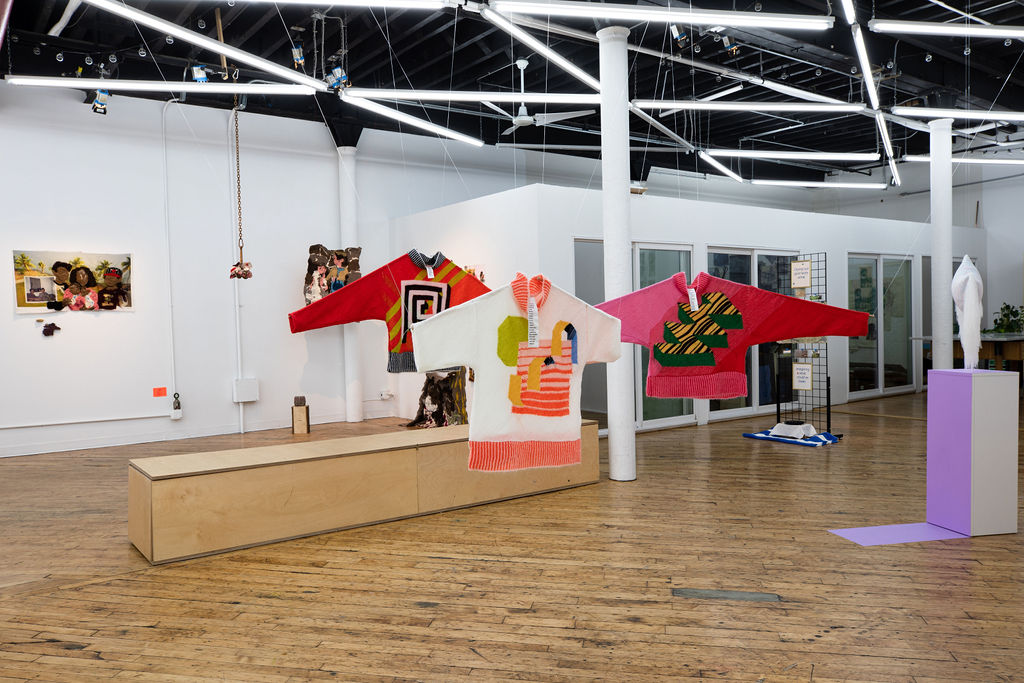
1 of 48
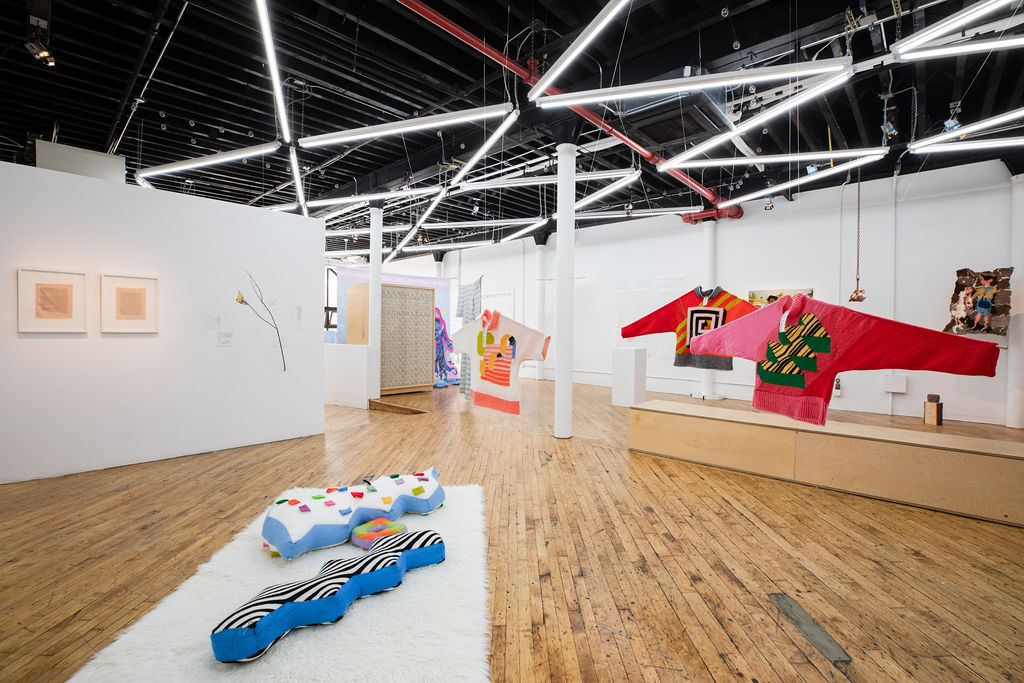
2 of 48
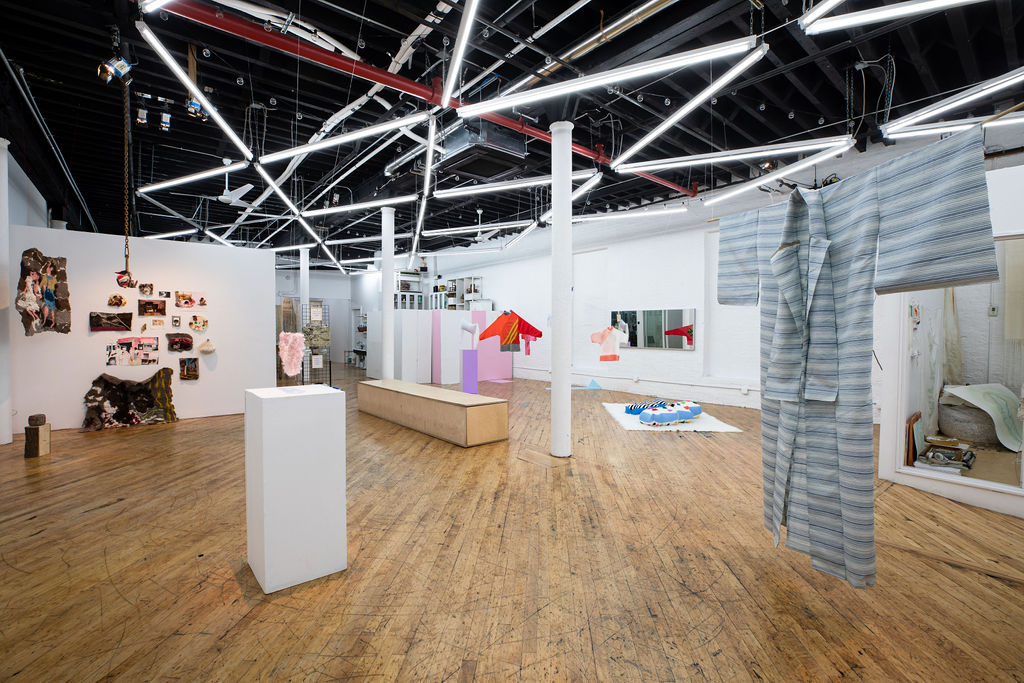
3 of 48
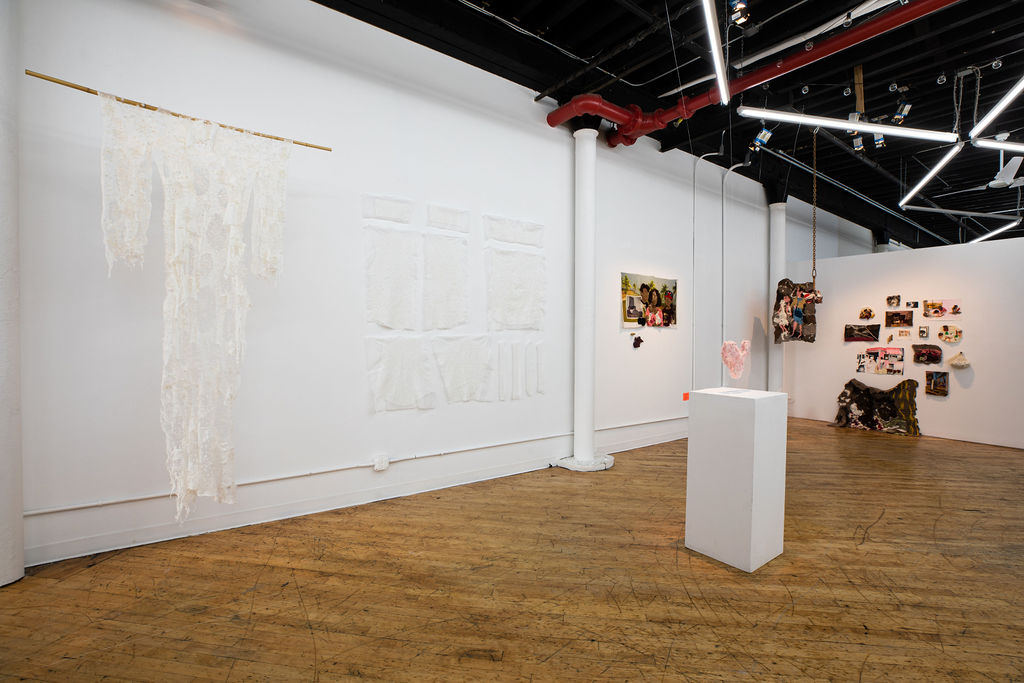
4 of 48
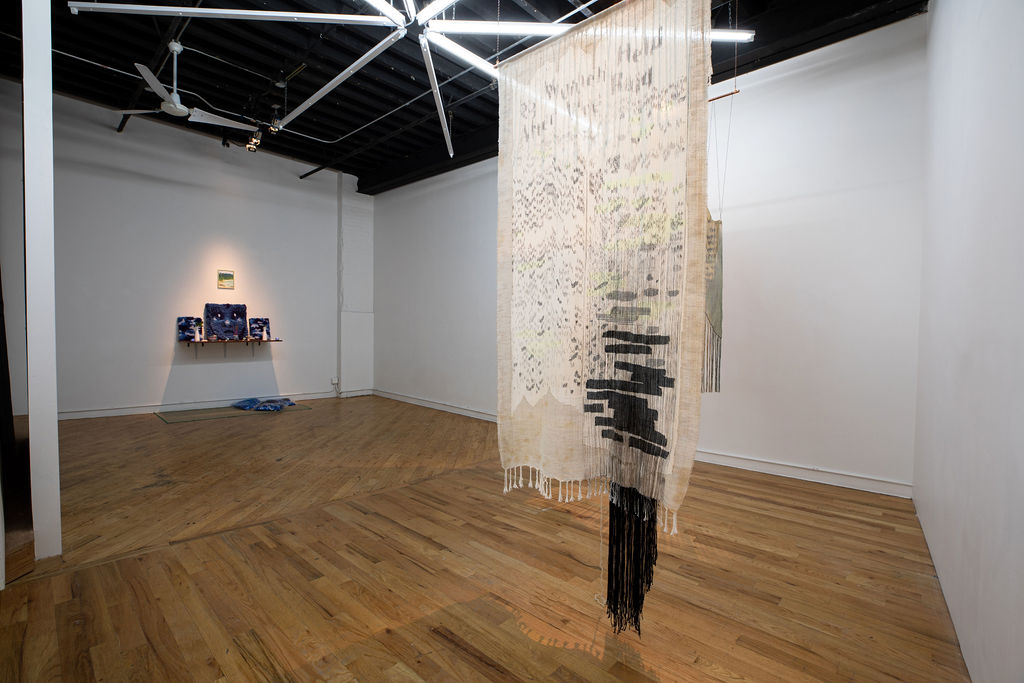
5 of 48
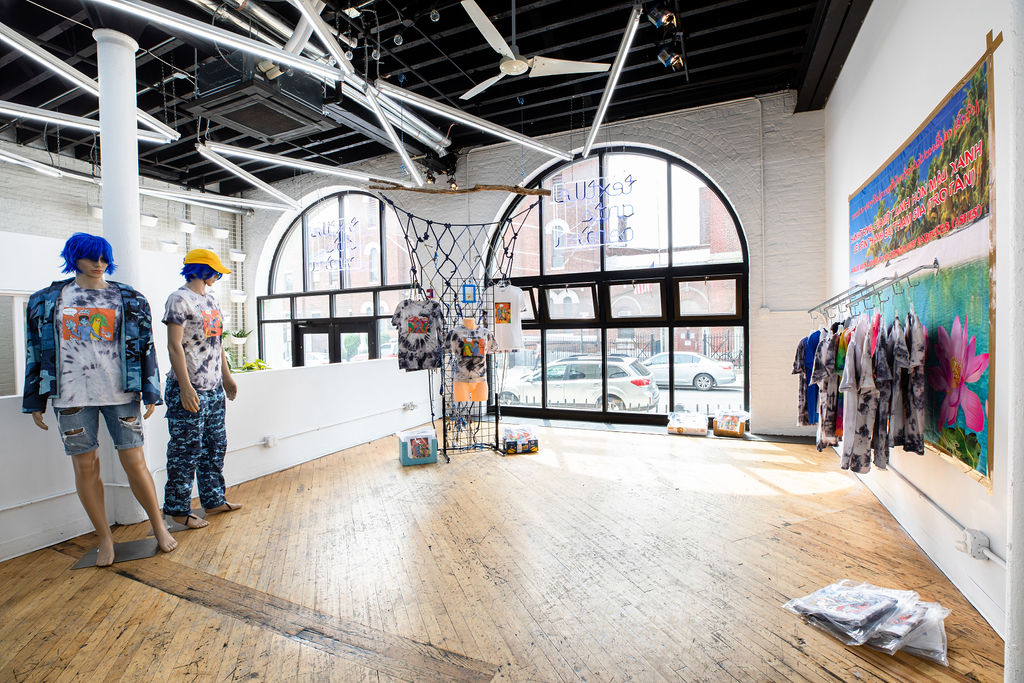
Cong-Tam Nguyen, Storefront for a wandering blue soul, 2020
6 of 48
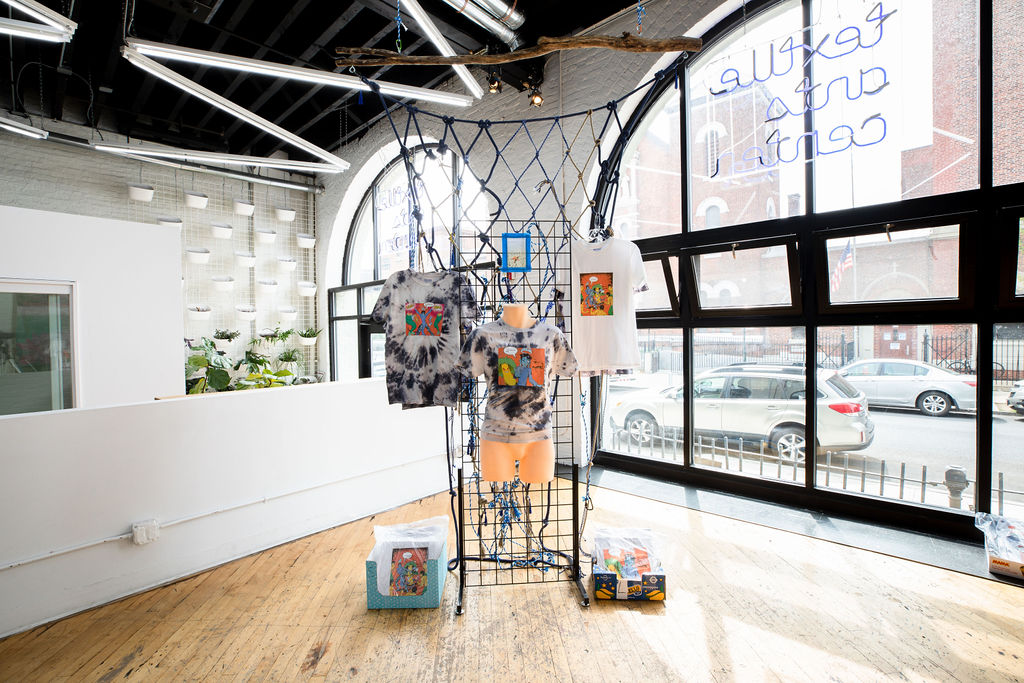
Cong-Tam Nguyen, Storefront for a wandering blue soul, 2020 // Amidst the pressures of conformity and assimilation, love is an act of vulnerability and simultaneously an act of resistance. It is a refusal of invisibility as well as an embrace of intimacy. Cong-Tam Nguyen (they/them or he/him) is a contemporary artist whose practice and identity are rooted in an ongoing dialogue with various forms of romantic and familial love in their life. As a queer, non-binary person raised in a family of Southeast Asian refugees, Nguyen’s relationship to love is laborious yet necessary in this world that is governed by white cis-heteronormativity.
7 of 48
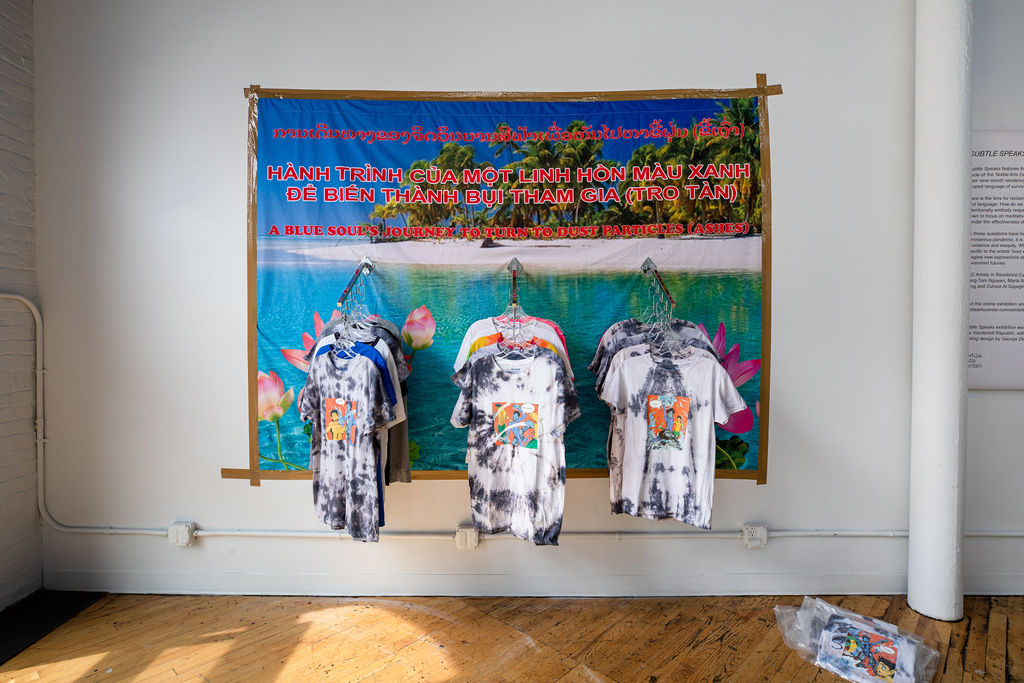
Cong-Tam Nguyen, Storefront for a wandering blue soul, 2020 // Nguyen’s work references Buddhist traditions surrounding death and spirits; East Asian pop culture and illustration; Southeast Asian textile industries and merchandise; tropical landscapes; Asian American sociopolitics; and their family’s history of surviving and overcoming war and violence. For Nguyen, these things are accompanied by instances of love in their life--a prayer to a deceased family member, an overworn shirt purchased as a souvenir from their ancestral homeland, a suppressed crush on the main character from their favorite TV show.
8 of 48
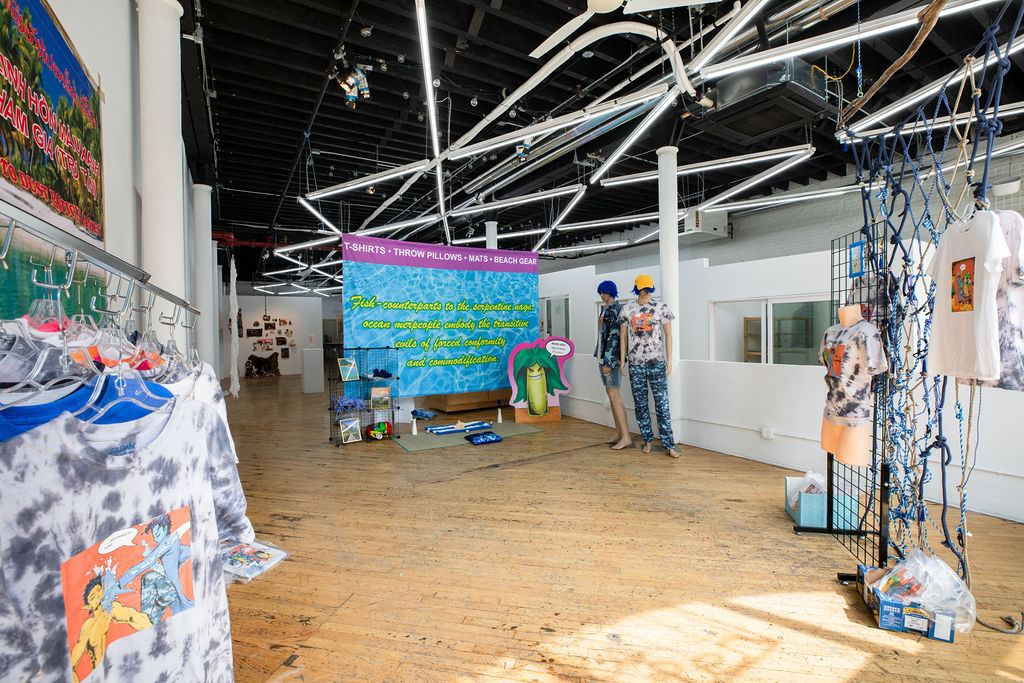
Cong-Tam Nguyen, Storefront for a wandering blue soul, 2020 // Composed of both handmade and readymade objects and images, Nguyen’s mixed-media installations and sculptural assemblages reimagine their experiences involving romance and family as fictional narratives. These narratives emphasize the challenges and burdens of love--moments that are seldom cherished in favor of joy, pleasure and nostalgia. Through imagined worlds and characters, Nguyen’s work embodies truth more accurately than reality.
9 of 48
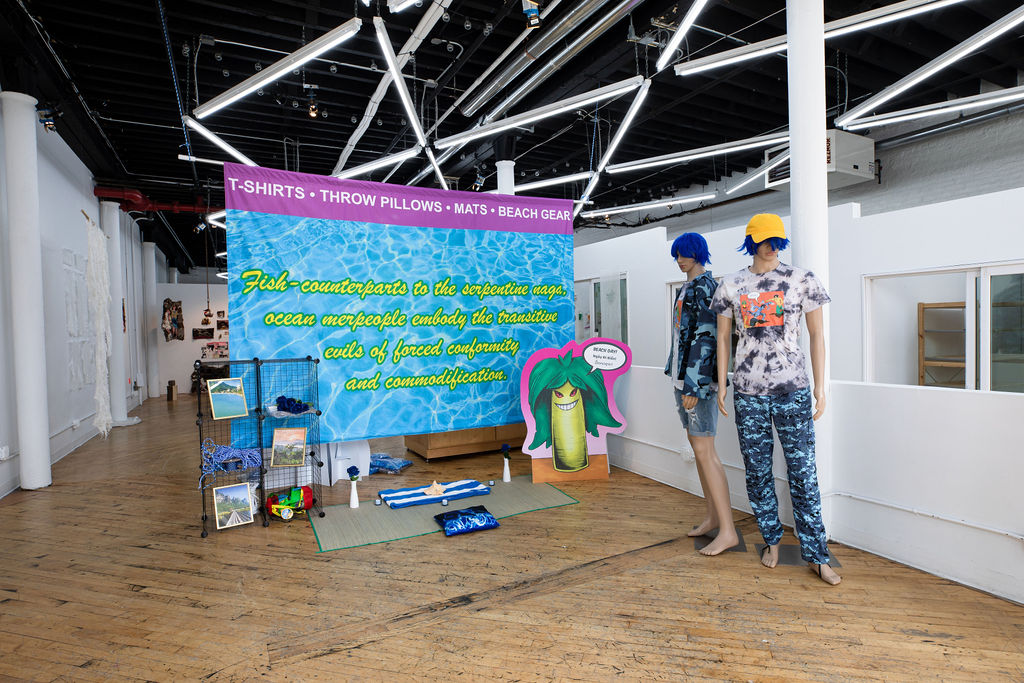
Cong-Tam Nguyen, Storefront for a wandering blue soul, 2020 //
Dust particles (Ashes)
100 years ago did I exist?
A century from now, it could be the same
I come and go and cease to exist
between vastness of heaven and earth
10 of 48
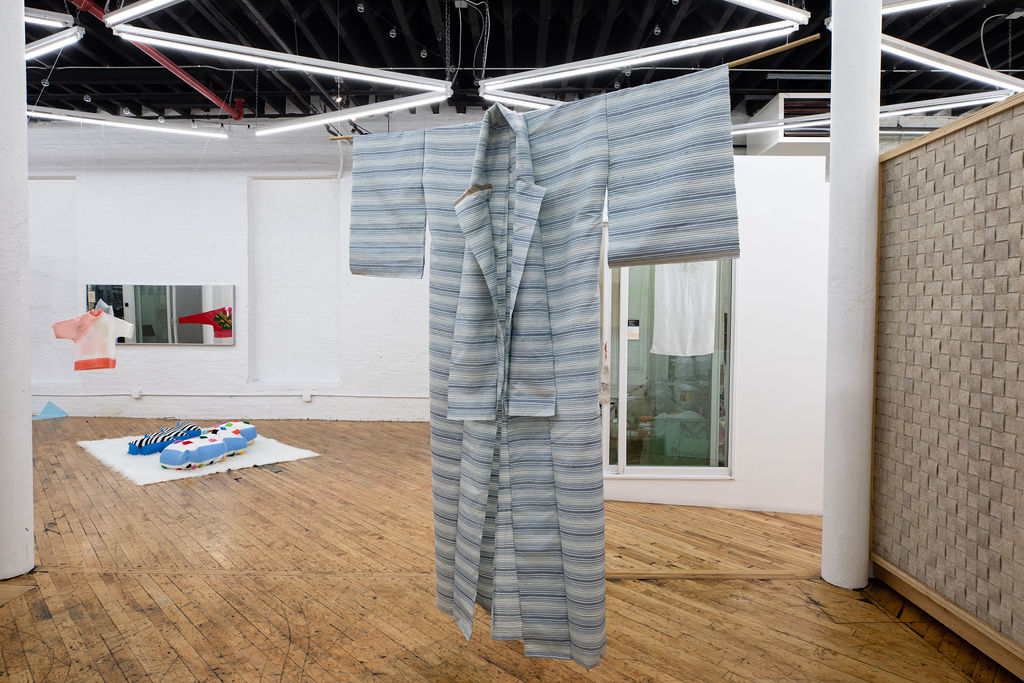
Aomi Kikuchi, Wavelet, 2020//
My work is based on Japanese aesthetics and Buddha’s philosophy. Wabi-sabi is well known in the world and is a beauty found in imperfections. Good examples are tea utensils such as tilted bamboo vases and distorted bowls. Another aesthetic that viewers can see in my work is Mono-
no-aware, which is a feeling of sympathy for changing or perishing phenomena or substances such as the seasons and all living things. These aesthetics are closely related to the philosophy of Buddha, which can be summarized in three key words: impermanence, insubstantiality, and suffering of our life.
11 of 48
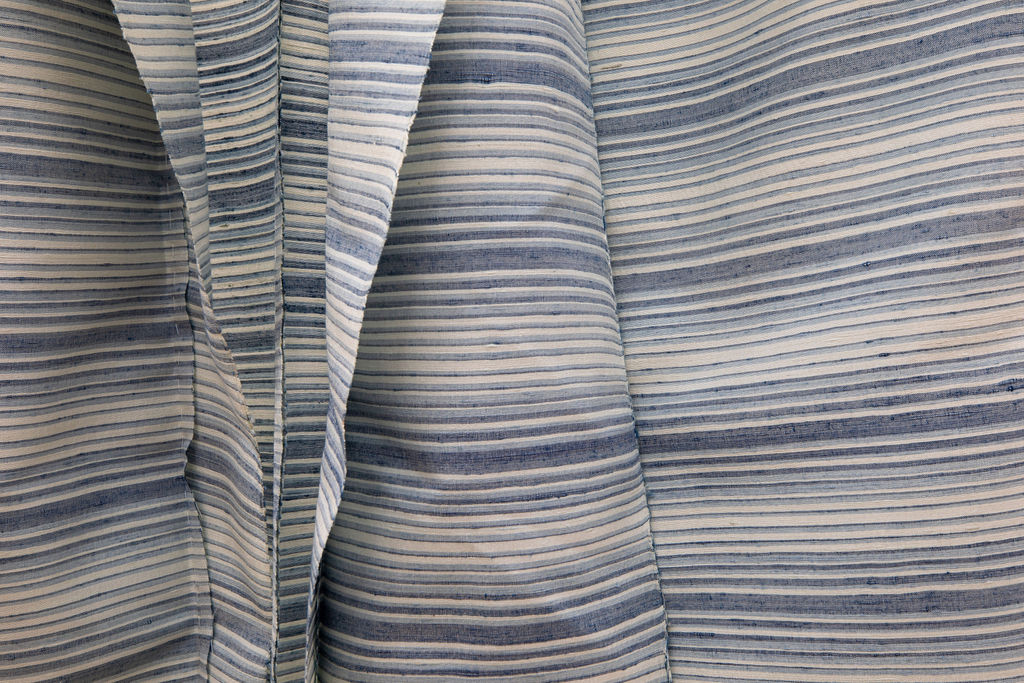
Aomi Kikuchi, Wavelet, 2020 (detail)
12 of 48
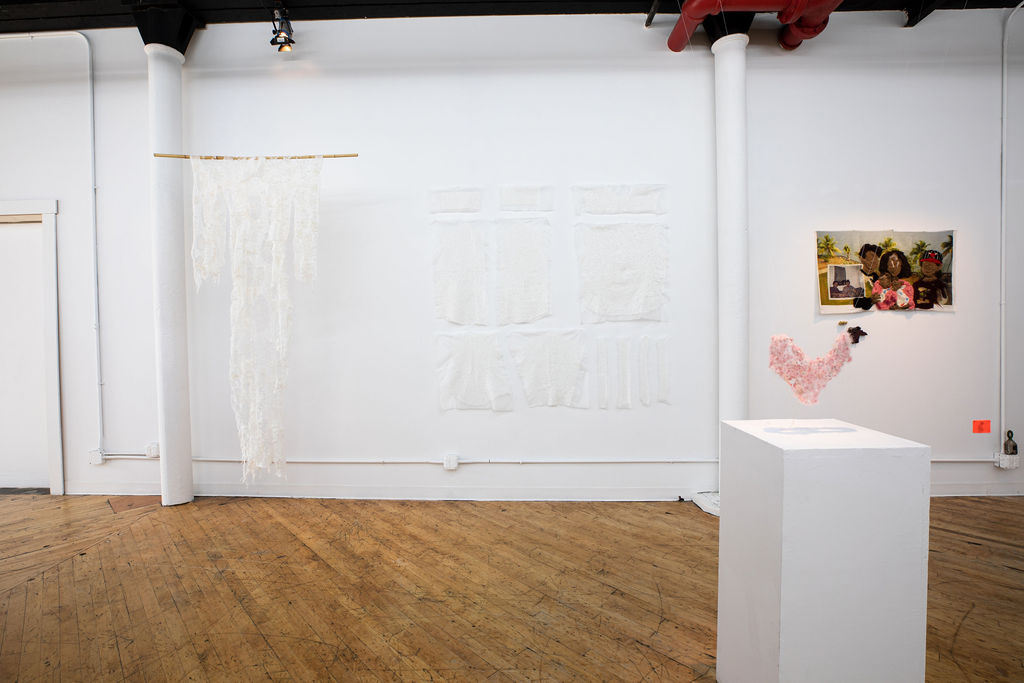
Aomi Kikuchi, Transition, 2020 (left) // Trash as material, 2020 (right) // Secret, 2020 (center)
13 of 48
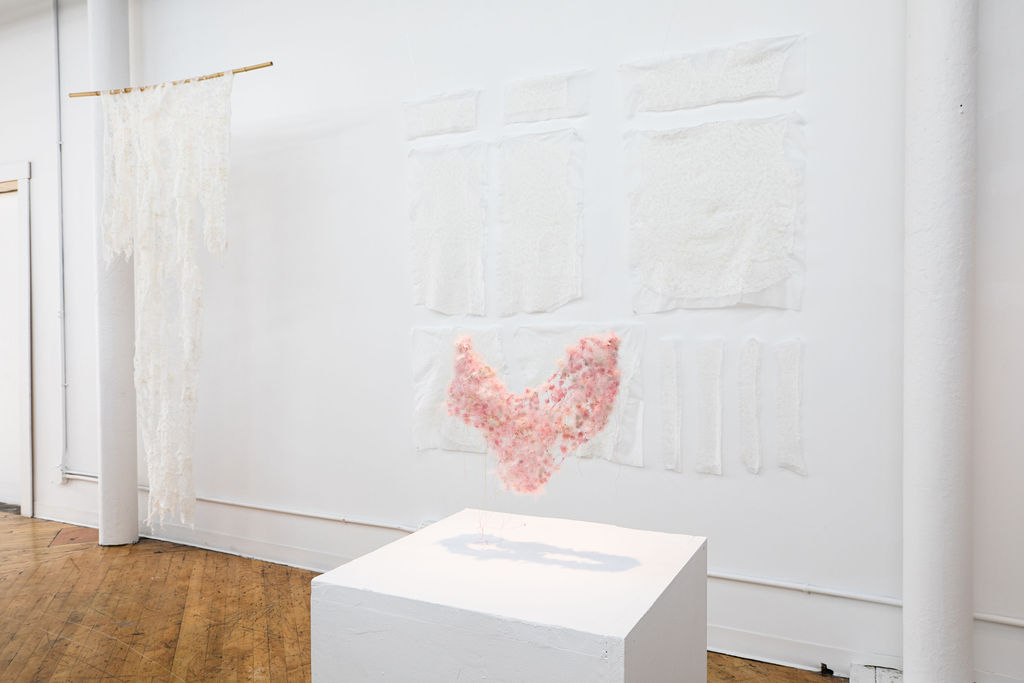
Aomi Kikuchi, Transition, 2020 (left) // Trash as material, 2020 (right) // Secret, 2020 (center)
14 of 48
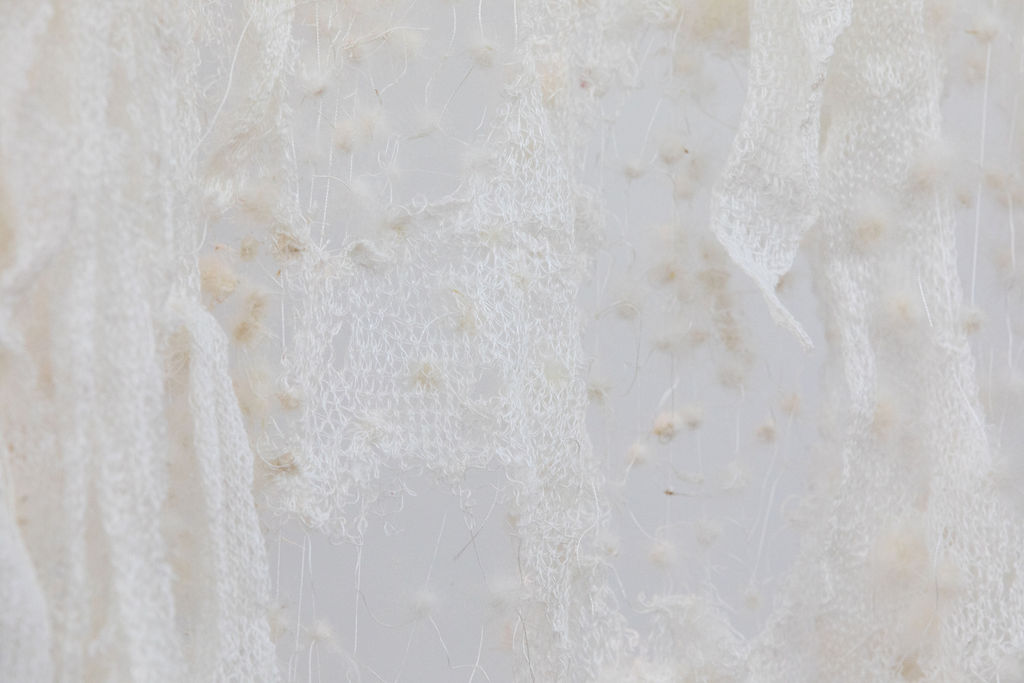
Aomi Kikuchi, Transition (detail), 2020 // After a long engagement with craft work, I started to deconstruct “craft” and “dye,” based on the fundamental questions, “what is craft?,” “what is dye?”
I freely combine acquired knowledge and techniques of textiles including, dyeing, weaving, sewing, knitting, to make work that goes beyond genres and convention rules. I also deconstruct, destroy and harm materials to experiment with them and willingly use scraps and discarded materials from my work and my environment.
15 of 48
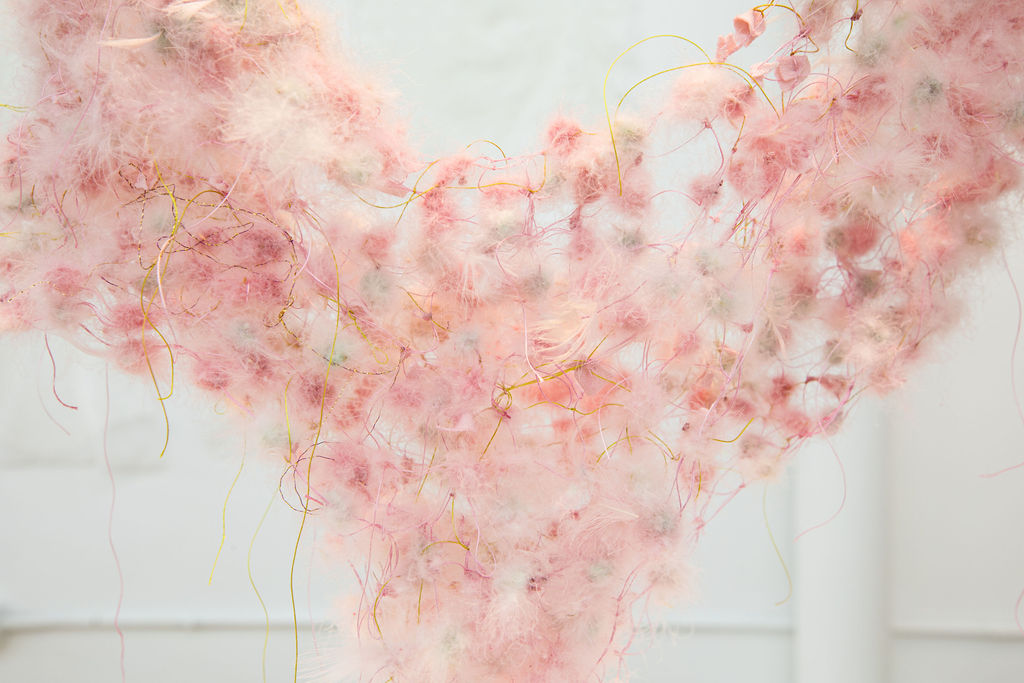
Aomi Kikuchi, Secret, 2020
16 of 48
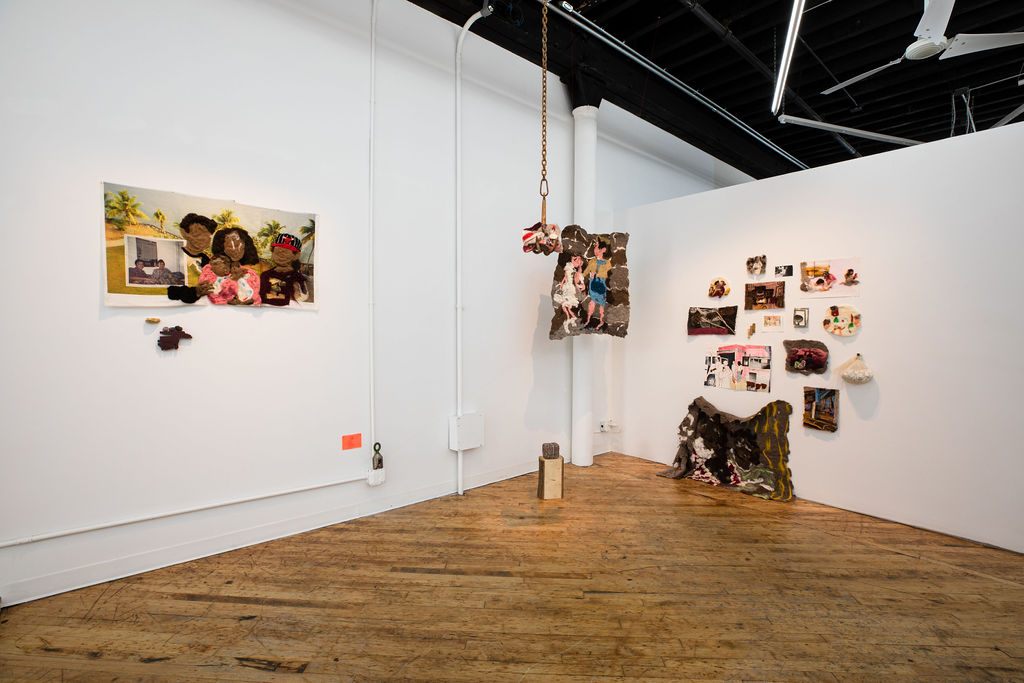
Melissa Joseph // One of the most meaningful roles I have taken on is a “keeper of stories” which I accept and tend to with particular care. I carry these stories around with me, take them out when I need them, and then tuck them safely away for the next time. As they shuffle around in my mind, stories blend together and corners get knocked off. But it’s never anything a little elbow grease can’t shine back up.
17 of 48
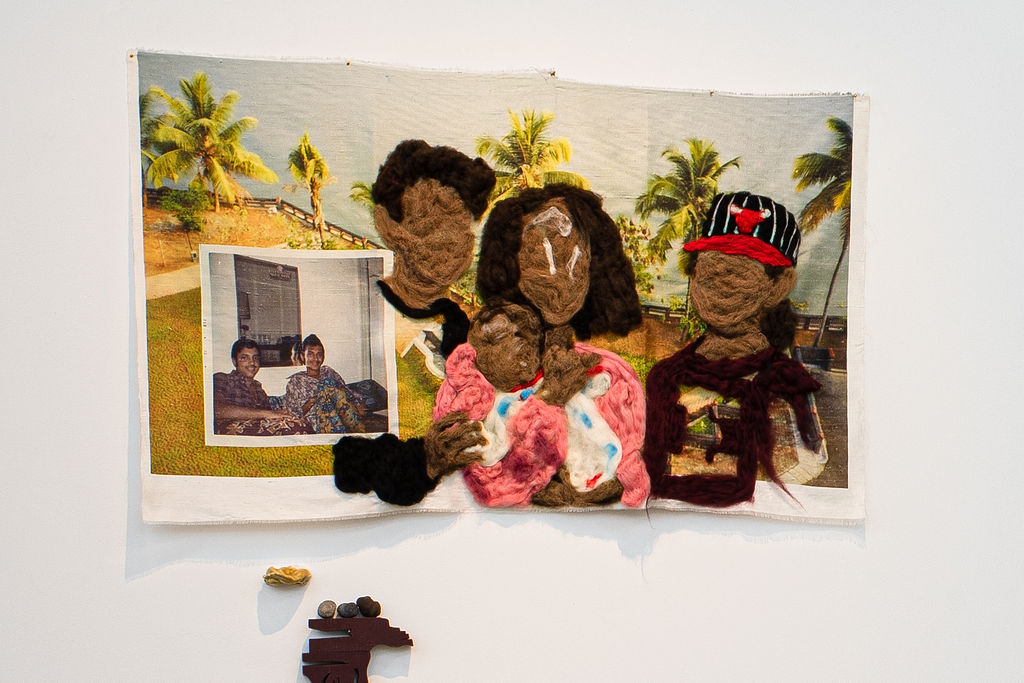
Melissa Joseph, Picking up cousins from the airport, 1992, 2020
18 of 48
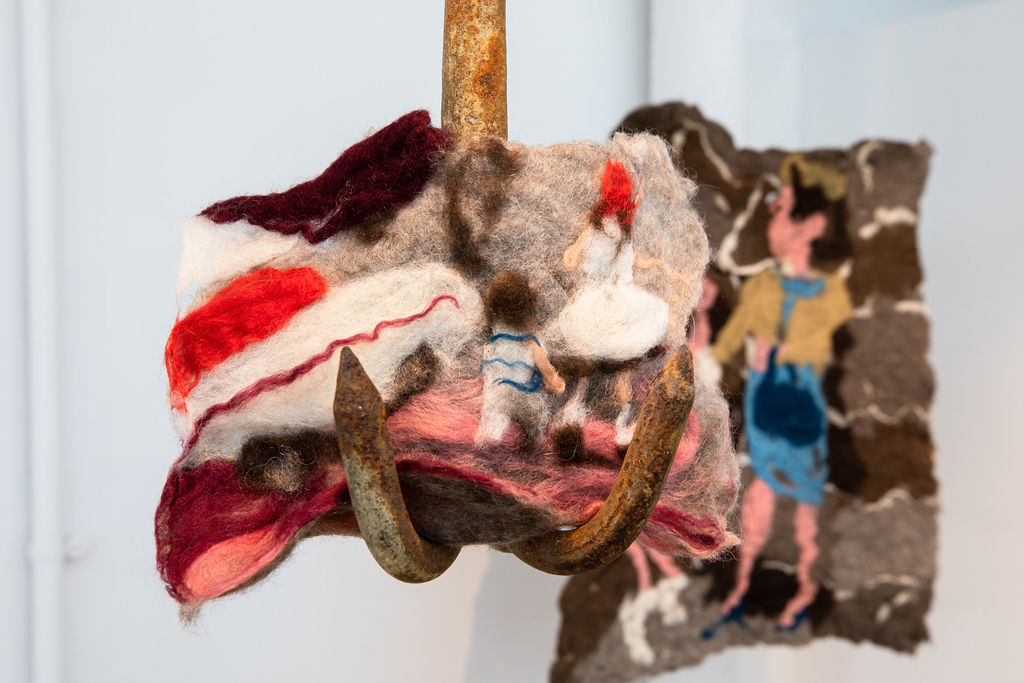
Melissa Joseph, When the Thompsons came in the white convertible, 2020
19 of 48
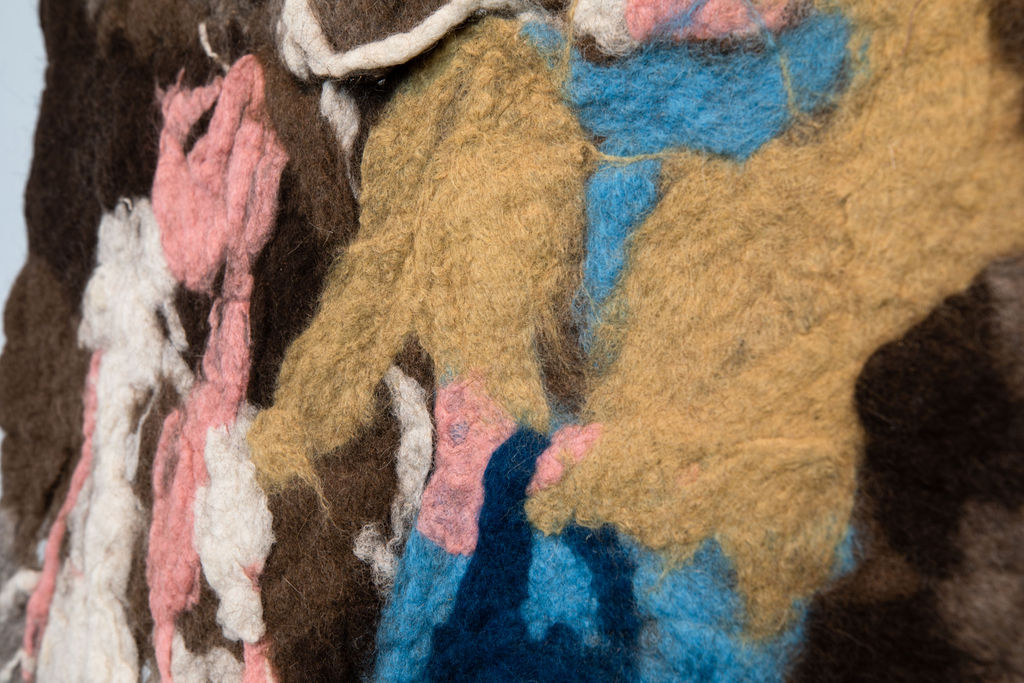
Melissa Joseph, Aunt Carol's First Communion, with Nan at St. Bernard's , 1961 (detail), 2020
20 of 48
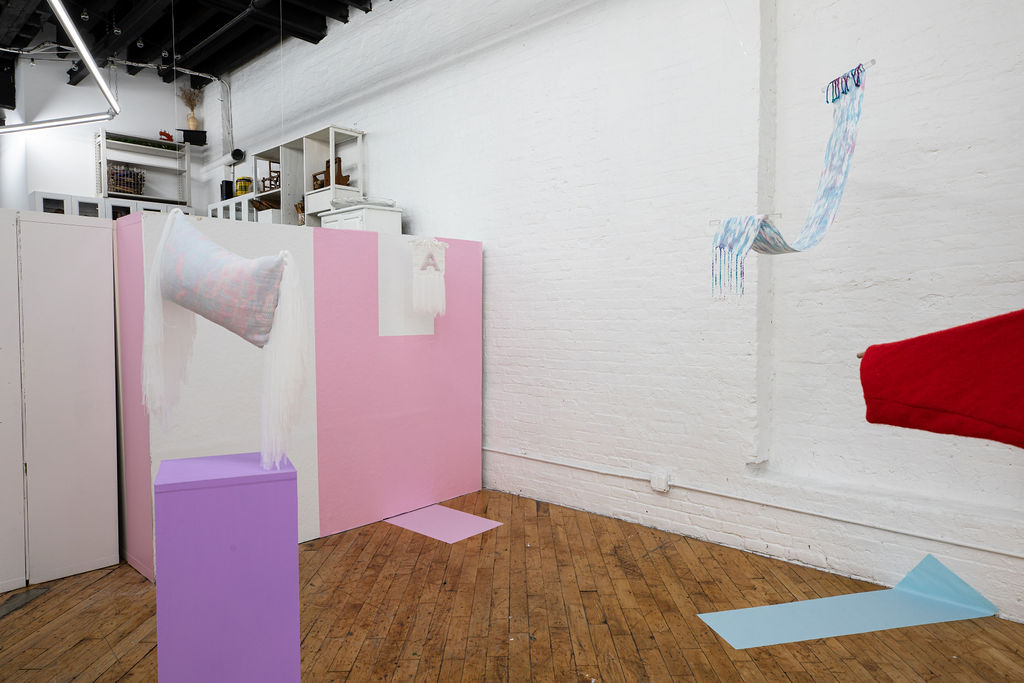
Anthony Shimek // Pieces I make often have layered meanings using a translation process to weave text. Learning new methods and using new materials allows me to lean more deeply into design and to play with more traditional weaving structures in a new way. I have always been drawn to bright and bold colors – filling my spaces with them as a way of creating energy. Even when diffused by transparent fibers, the vibrant colors find a way of pushing through to create a playful sense of joy. Intricate in their creation yet simple in their intent, these pieces were carefully created with the same happiness and wonder they hope to communicate.
21 of 48
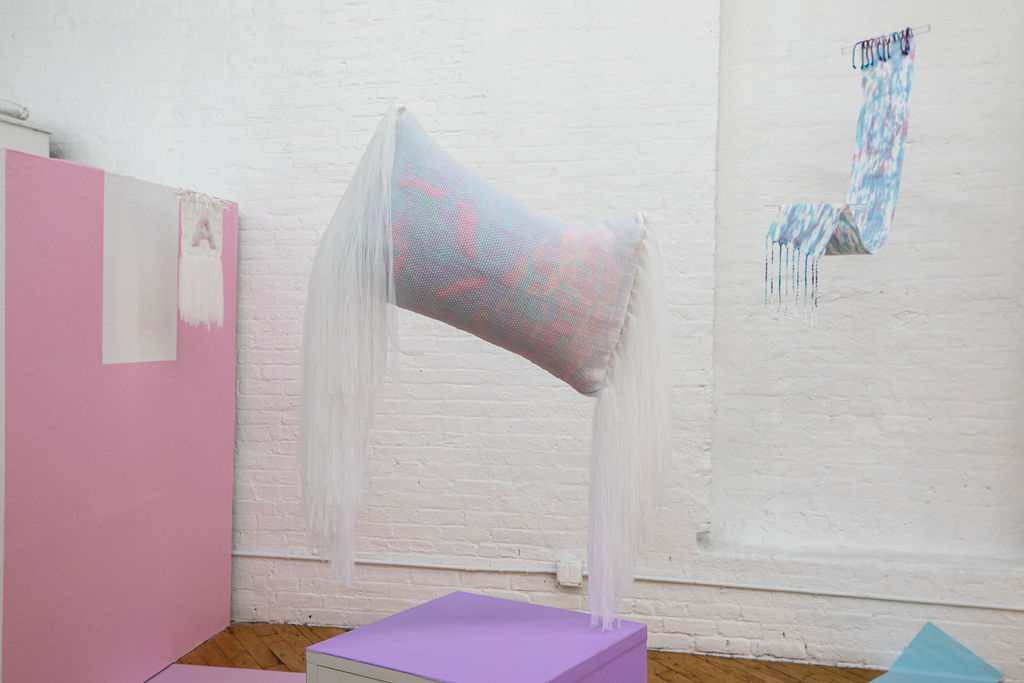
Anthony Shimek, Amelia, 2020 (left) // Lava Pillow, 2020 (center) // Zigs, 2020 (right)
22 of 48
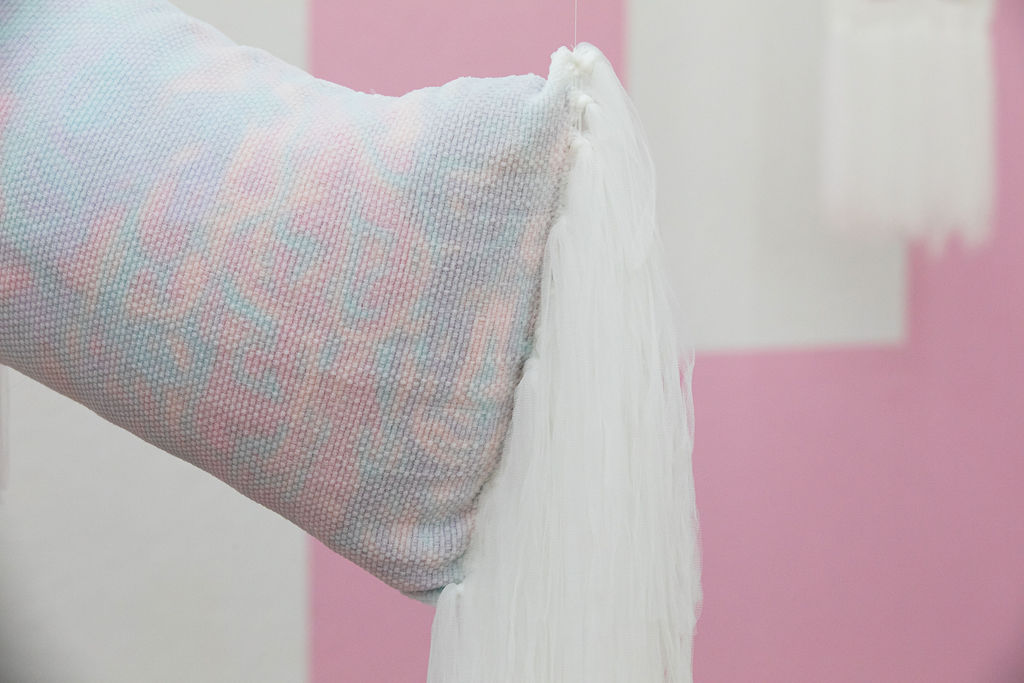
Anthony Shimek, Lava Pillow, 2020 (detail)
23 of 48
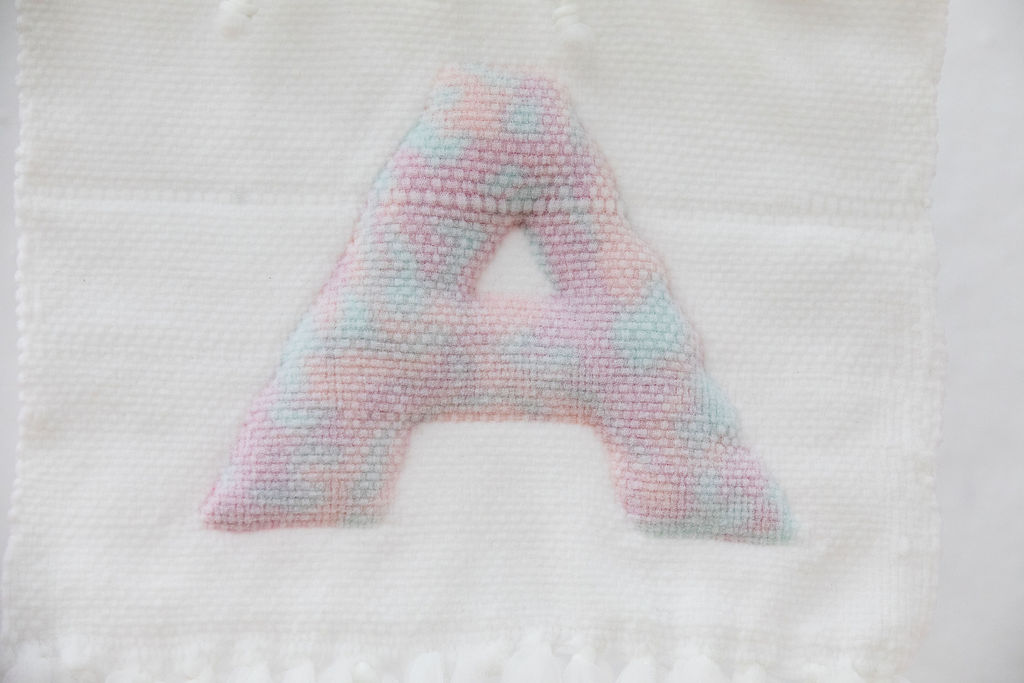
Anthony Shimek, Amelia, 2020 (detail)
24 of 48
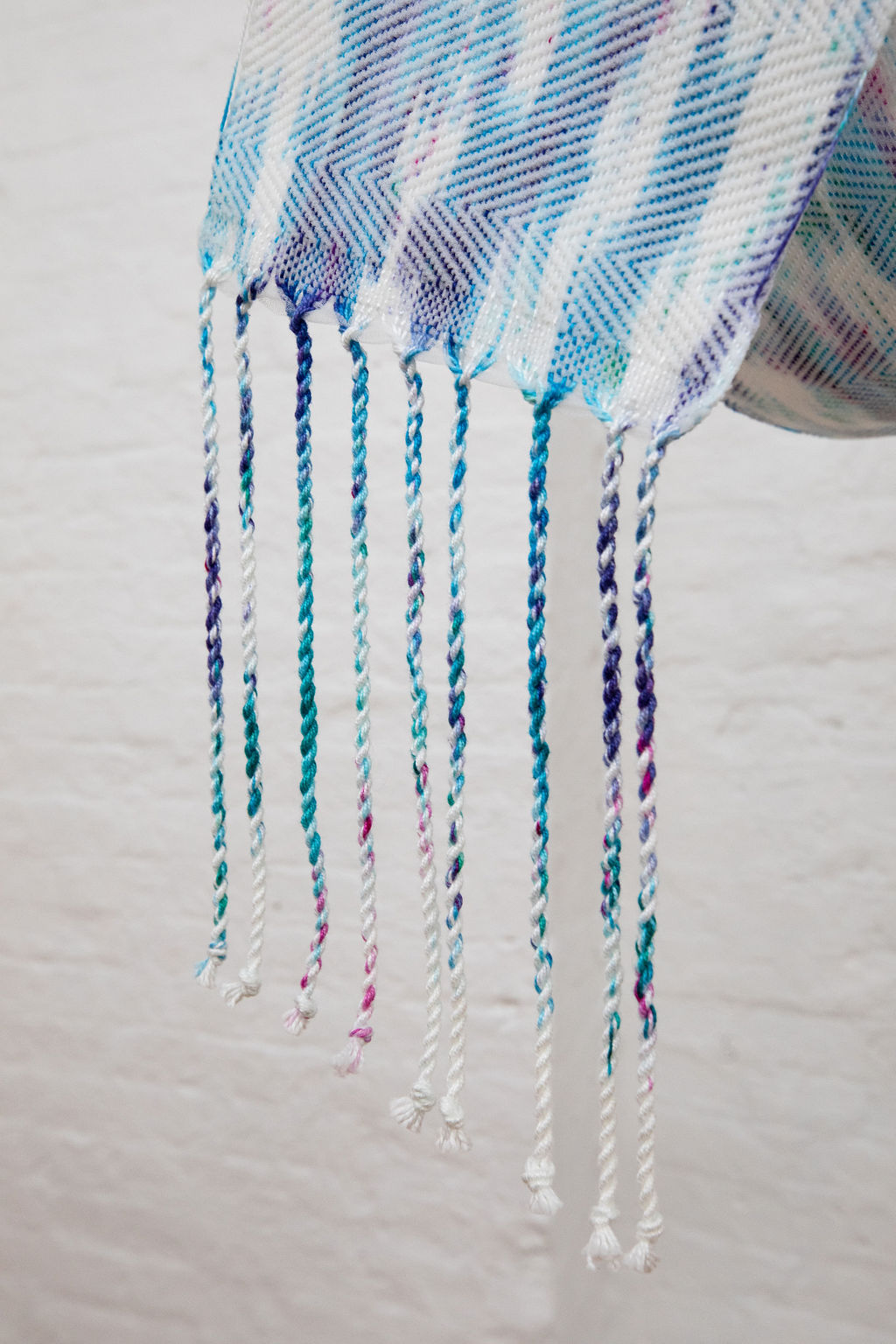
Anthony Shimek, Zigs, 2020 (detail)
25 of 48
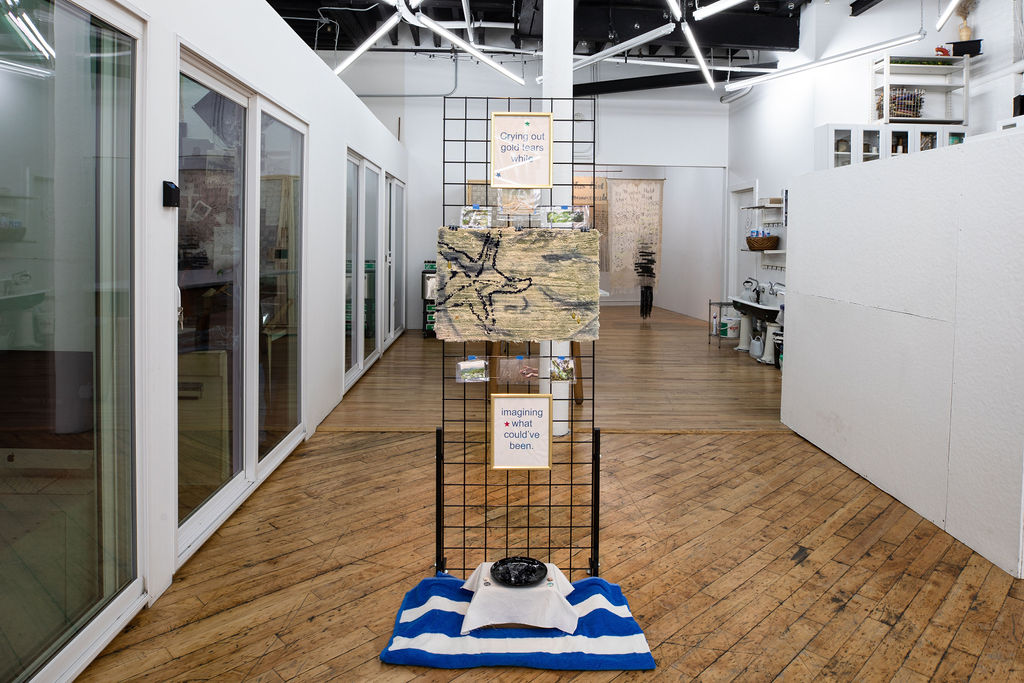
Cong-Tam Nguyen, Crying out gold tears while imagining what could've been, 2020
26 of 48
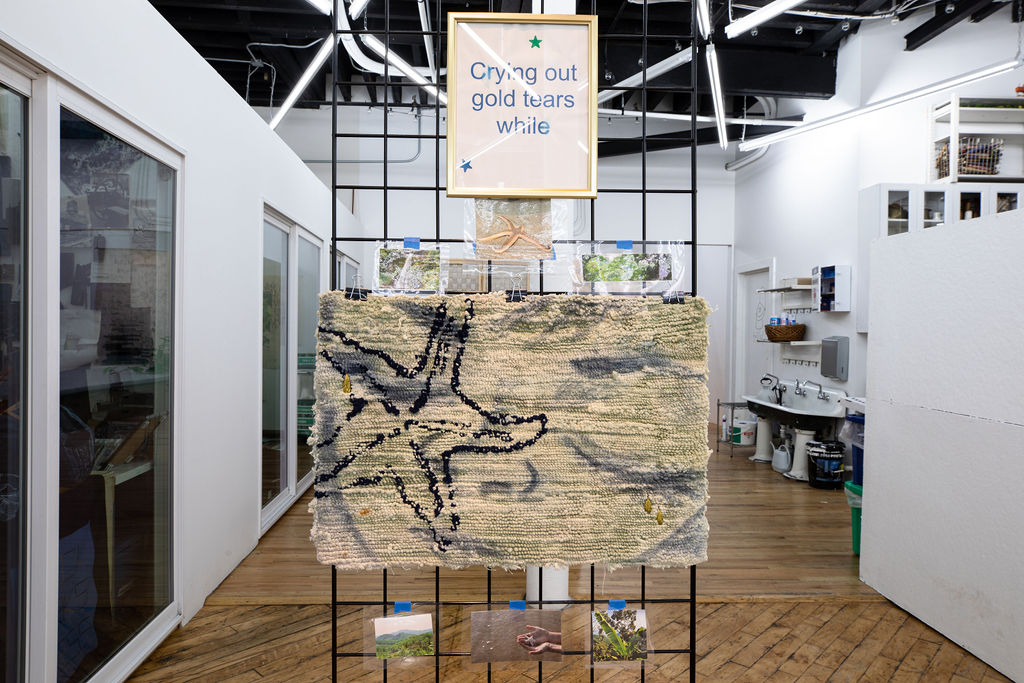
Cong-Tam Nguyen, Crying out gold tears while imagining what could've been, 2020 (detail)
27 of 48
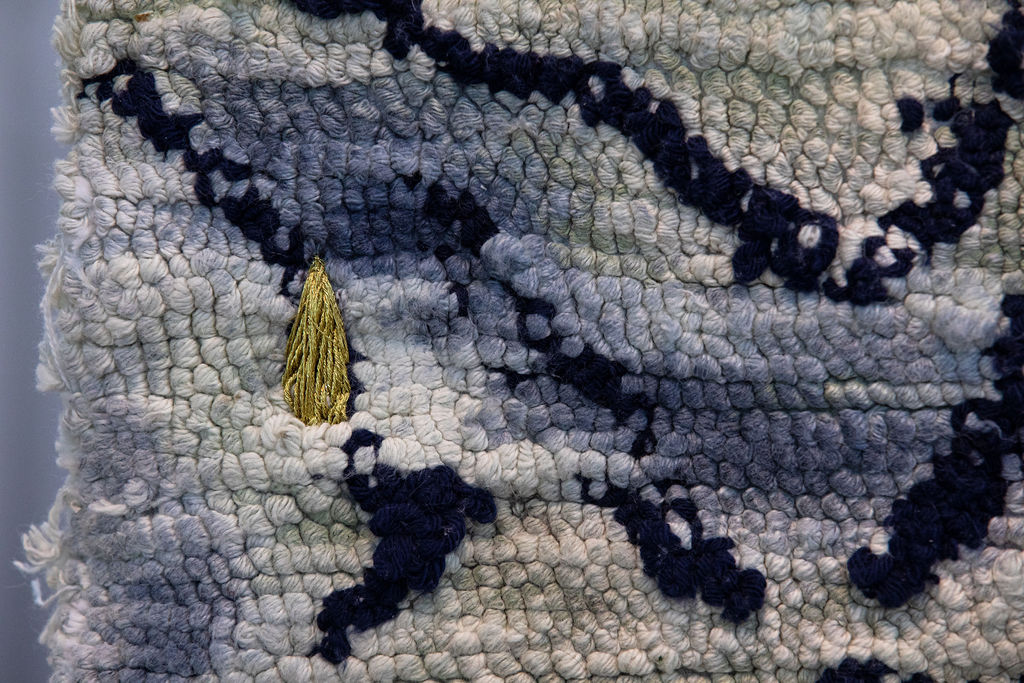
Cong-Tam Nguyen, Crying out gold tears while imagining what could've been, 2020 (detail)
28 of 48
Zuhoor Al Sayegh, Look how she dances so carelessly - ترقص بلا صروال كيف مصرولة , 2020
29 of 48
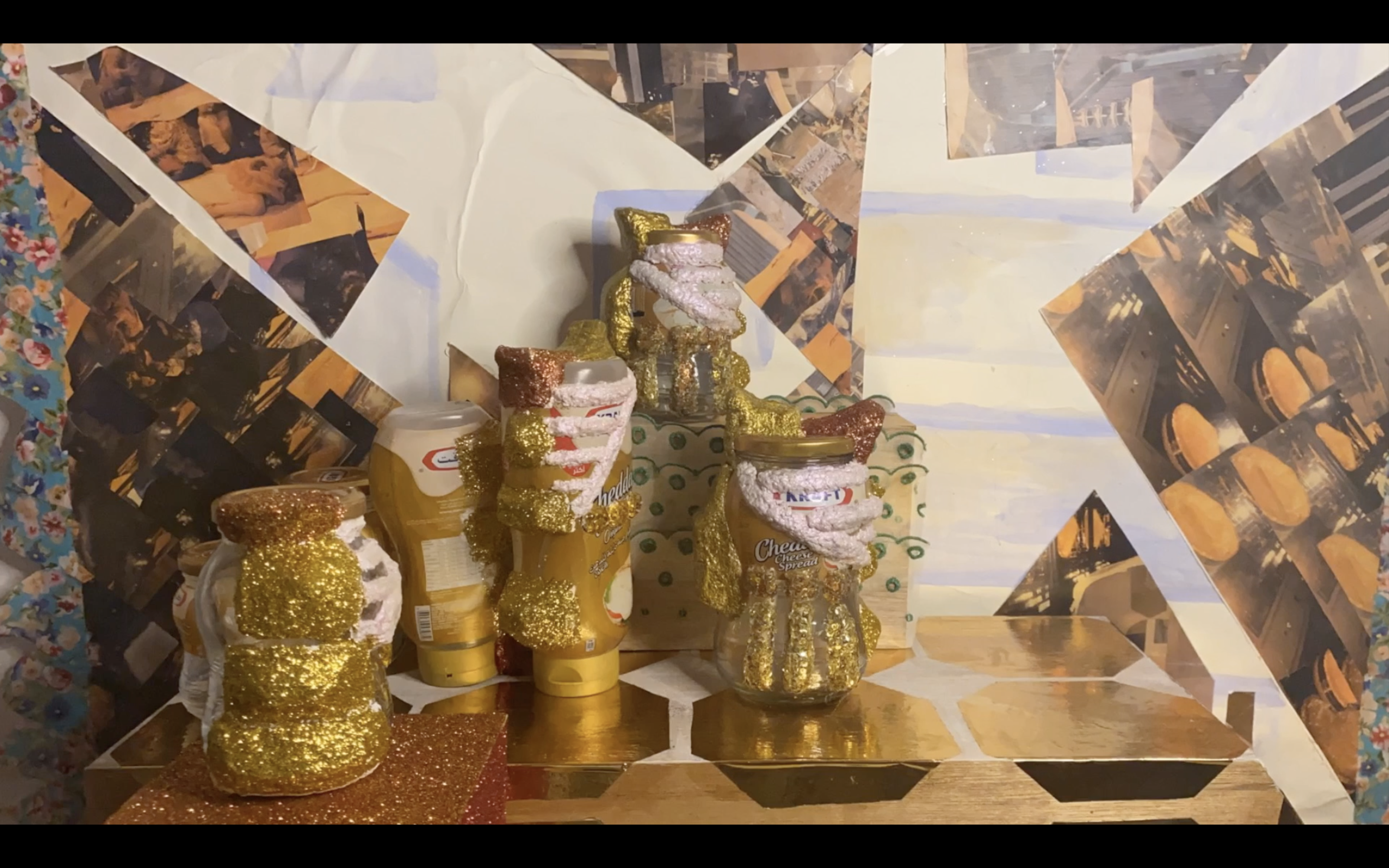
Zuhoor Al Sayegh, Look how she dances so carelessly - ترقص بلا صروال كيف مصرولة , 2020 (stop motion animation video still) // I inherit sentimentality. The jar of Mario Batali pasta sauce that followed me from my freshman dorm is of great importance to me. As if it was destined to hold my paint brushes. I hoard memories that aren’t mine and embody them, place myself in them, dance in them. I crave time-travel and practise it like my weekly run. My space-ship is a kraft cheese jar - جبن قلاصات - the cheese of glasses. A proclamation that is both royal and anti-imperialist. Plastic in texture, shiny as if it was coated in varnish yet subdued.
30 of 48
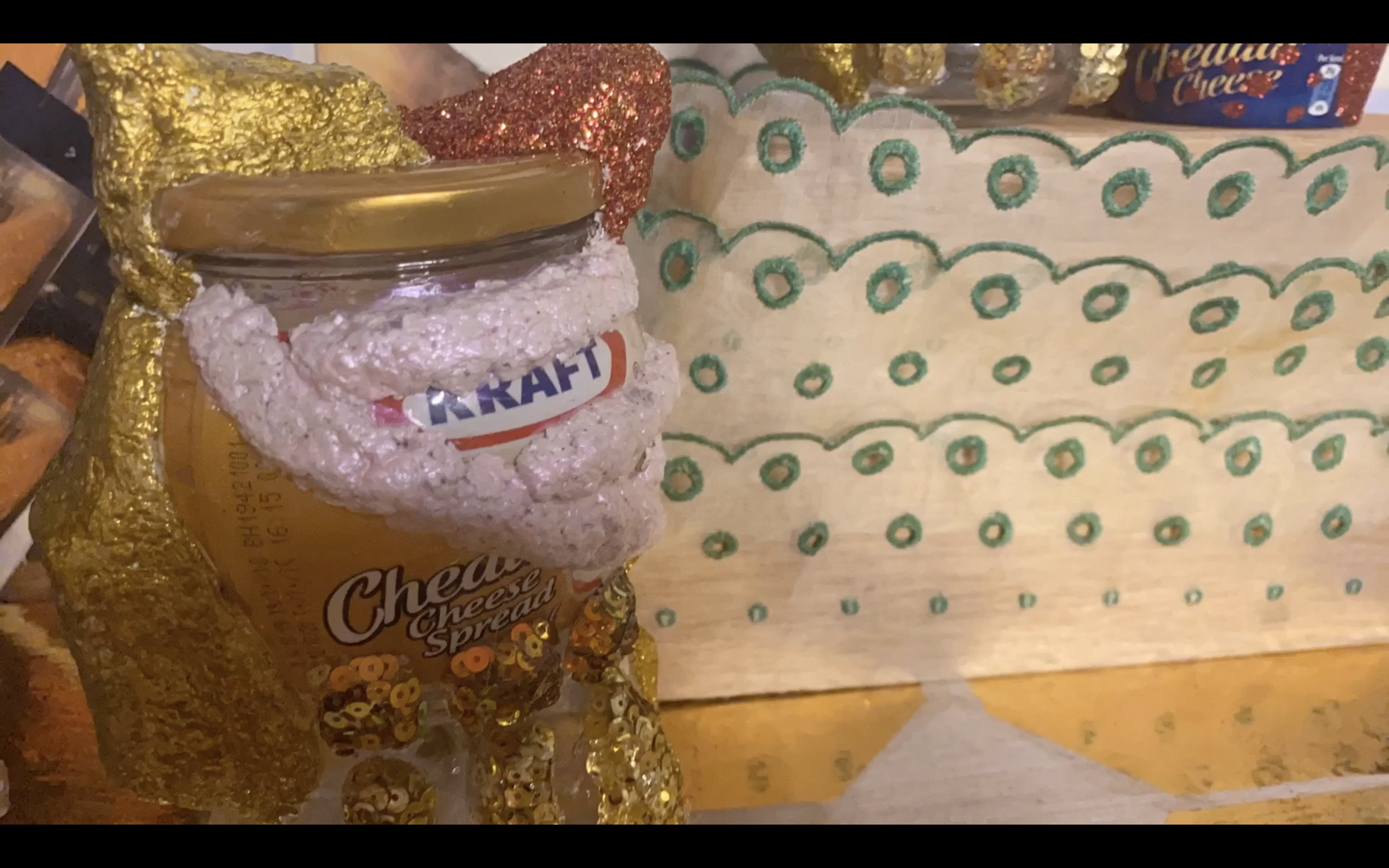
Zuhoor Al Sayegh, Look how she dances so carelessly - ترقص بلا صروال كيف مصرولة , 2020 (stop motion animation video still) // I have taken trips to the Sheraton quite regularly since the world has entered quarantine. I stood behind the desk checking in Alan Sheppard in the early 80s. I ask him why the sheraton was his follow up to the moon and ignore his response, I prefer my own reasoning. I am in the ballroom at my parents wedding, thinking about what might happen if I swung through the copper mirrors on the wall using a tiffany blue streamer.
31 of 48
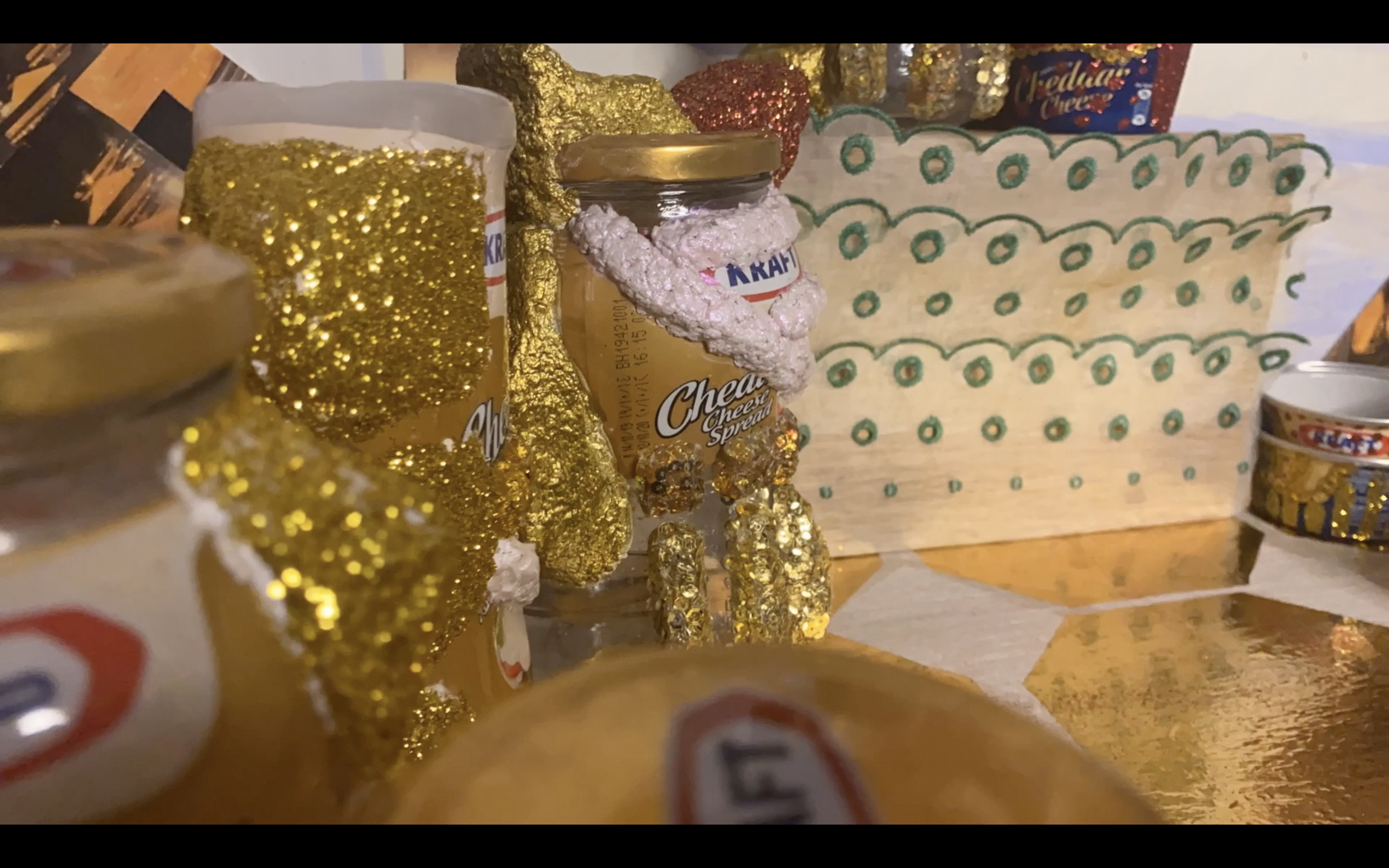
Zuhoor Al Sayegh, Look how she dances so carelessly - ترقص بلا صروال كيف مصرولة , 2020 (stop motion animation video still) //
ترقص بلا صروال كيف مصرولة (look at how she dances so free, imagine how much more she could be?) is an exploration of movement and every different definition the word can bring: time-travel and dance being the two most important. I've been making work as a visual response to my travels. I don’t always make it very far, I sometimes don’t even make it out of the kitchen. Mostly I am in my Grandpa’s kitchen in al sed, pouring oil over the harees exactly as my cousin shows me.
32 of 48
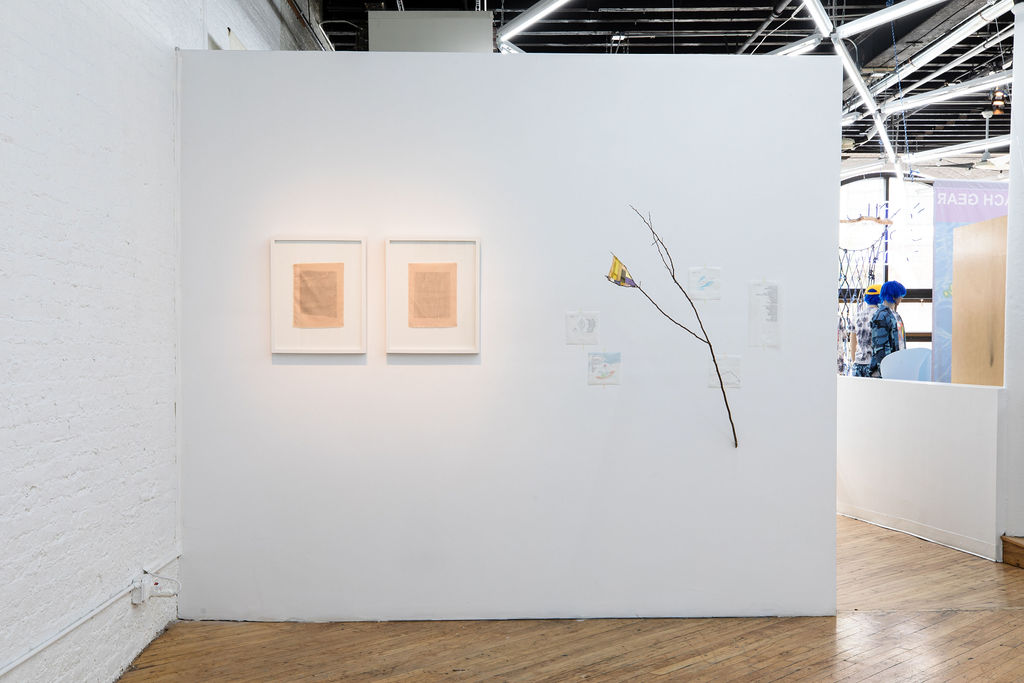
Yidan Zeng // Gradient Beings is an ongoing series of explorations in subtle slowness. They are archives of my curiosity for the slightest shifts of experience, leading me until I'm in a different color, texture, space, or time. They are meditations delighting in moments of contact. Drawing upon conventionally slow processes like typewriting, natural dyeing, and weaving, this series is an open invitation to revel in the surprises awaiting within mistakes, repetition, and attention. For to pay attention is the greatest form of love.
33 of 48
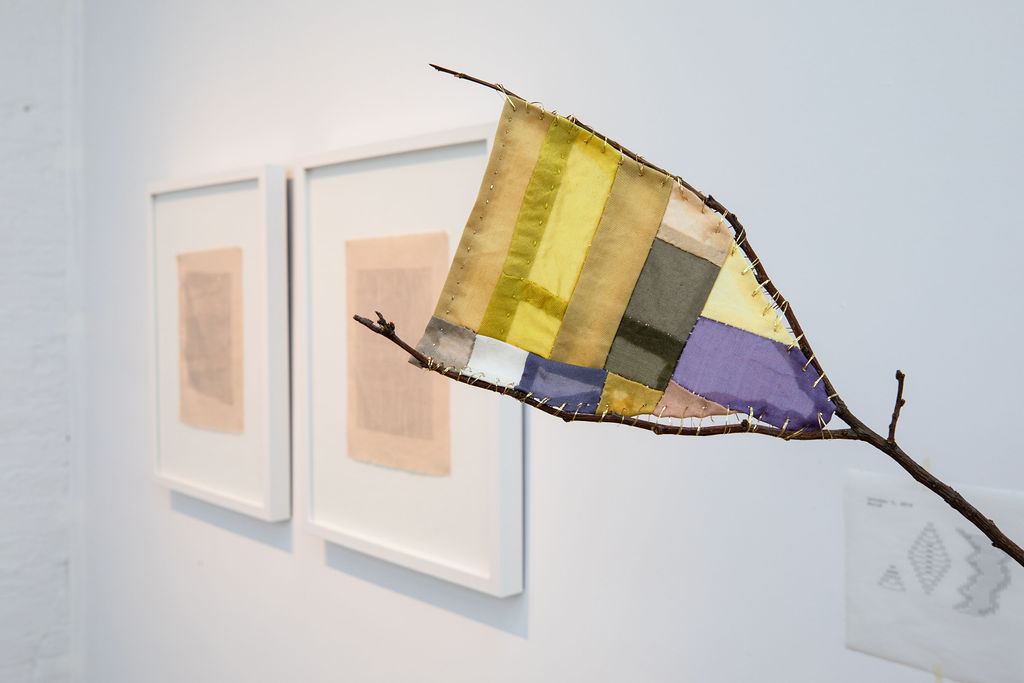
Yidan Zeng, Gradients {text}ures I & II, 2020 (left) // Quilted Space, 2020 (right)
34 of 48
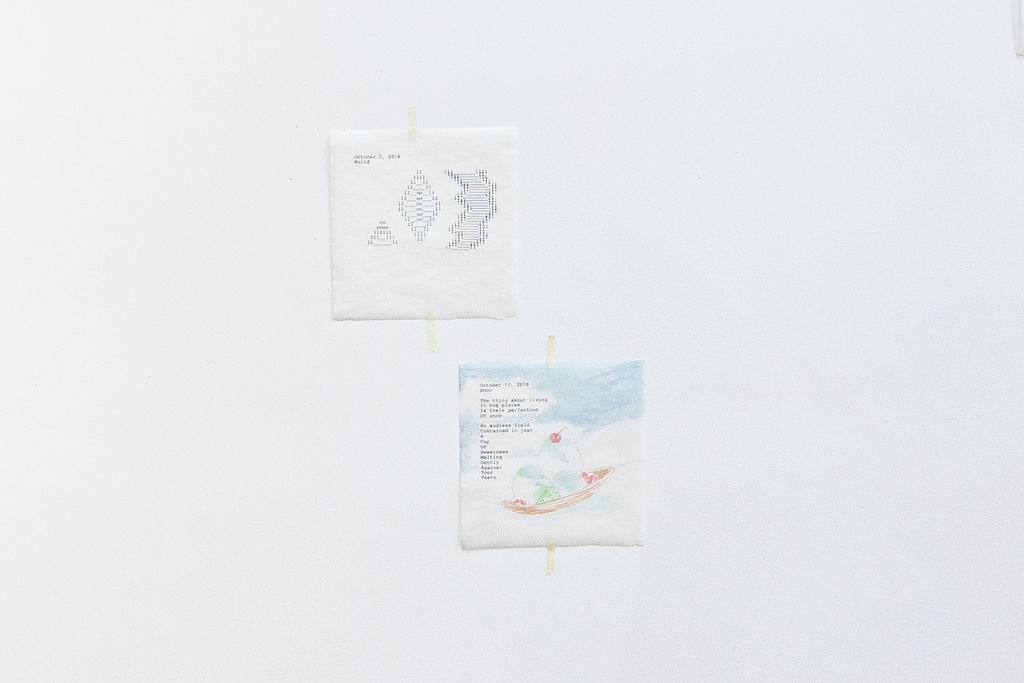
Yidan Zeng, Typed Drawing Series, 2020
35 of 48
Yidan Zeng, Dye Sky, 2020
36 of 48
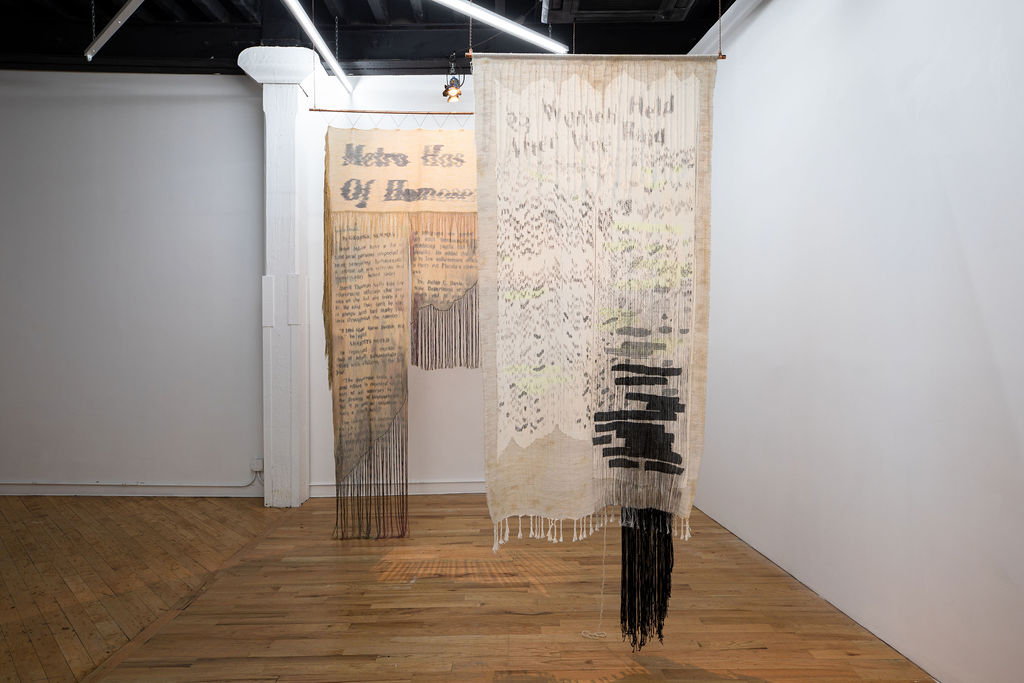
Rowan Renee, Metro Has List of Homosexuals, April 25, 1962, 2020 (back left) // 23 Women Held in Vice Raid, July 31, 1960, 2020 (front right)
37 of 48
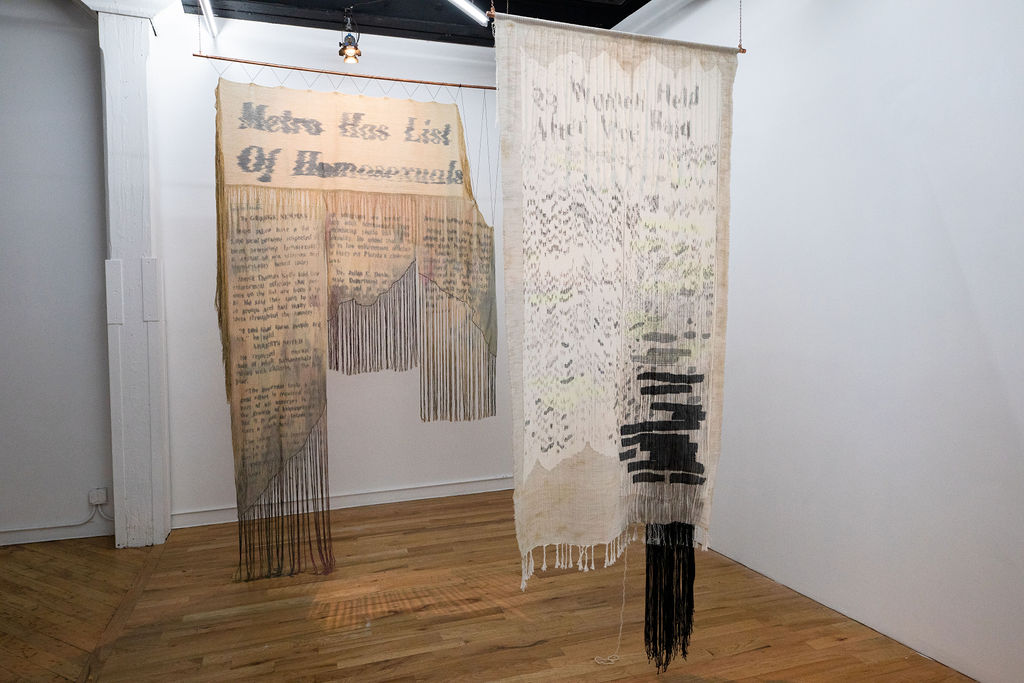
Rowan Renee // Airport Beach is an in-progress textile installation that uses weaving as a way to process, repair, and reassert dignity into archival material that documents local queer histories in the South Florida area where I grew up.
I began searching newspapers and other official records after my father died in prison, in 2011, while serving time for a homosexual sex offense. I used this archiving practice as a way to reconstruct gaps in my family history, while also searching for traces of the queer culture that shaped the Southern landscape my dad and I both lived in.
38 of 48
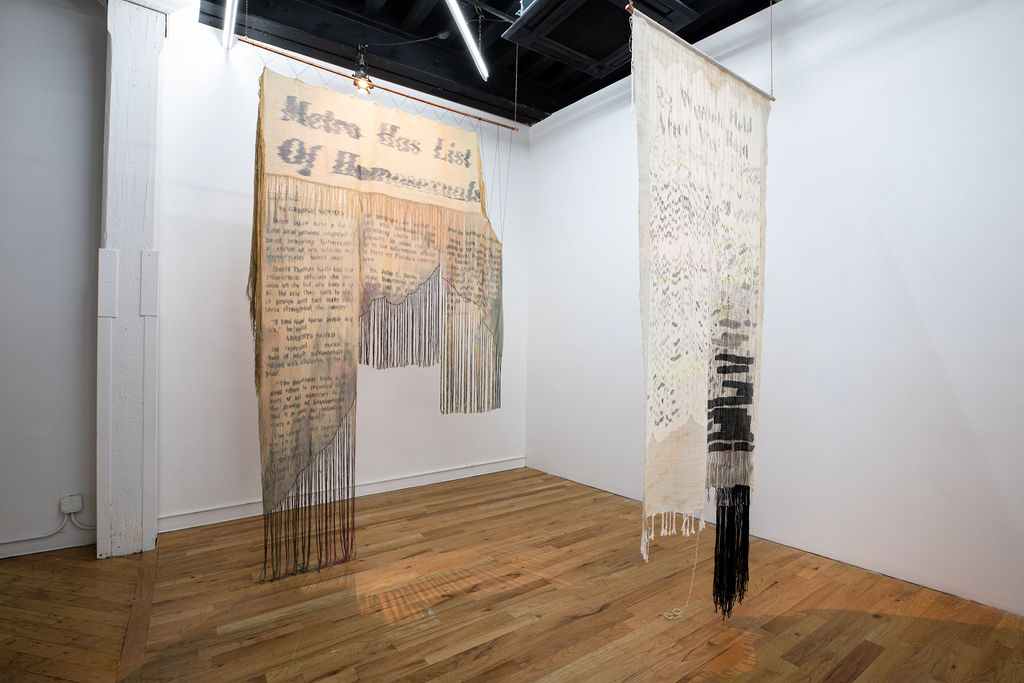
Rowan Renee // The histories I found through official sources did not celebrate queerness; instead they documented the expansion of State violence used to criminalize gender and sexually non-conforming people. Both of the pieces shown in Subtle Speaks – Metro Has List of Homosexuals and 23 Women Held in Vice Raid – document how visibility, when wielded by the State, becomes an act of violence. Weaving allowed me to reinterpret these painful histories through my body, using the loom as a site for care. These tapestries became something between a protective shield and a memorial.
39 of 48
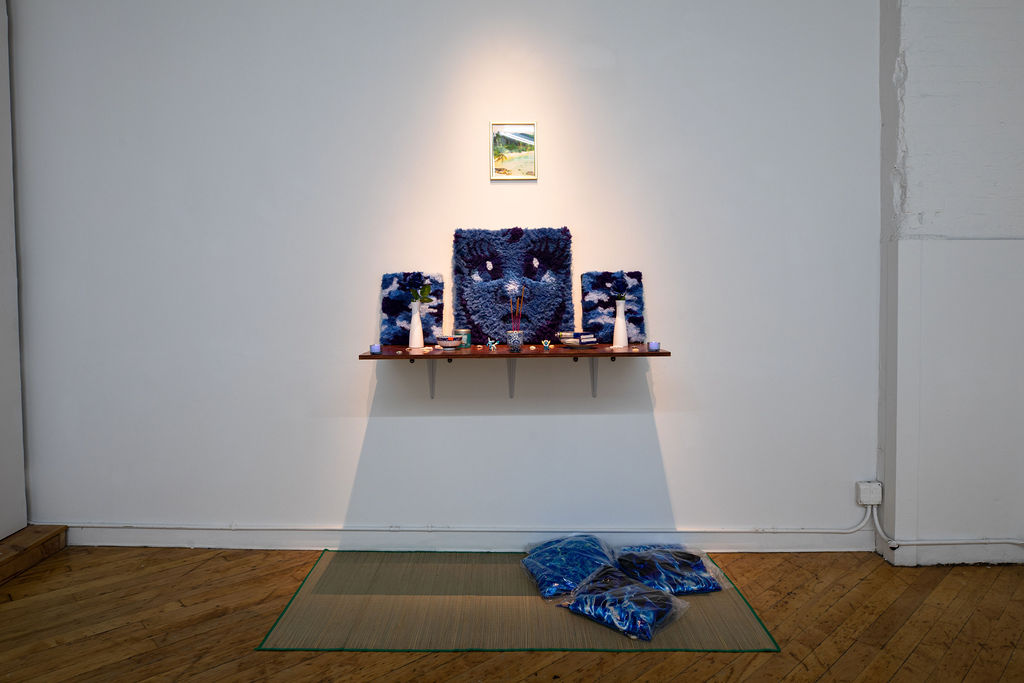
Cong-Tam Nguyen, Altar for a wandering blue soul, 2020
40 of 48
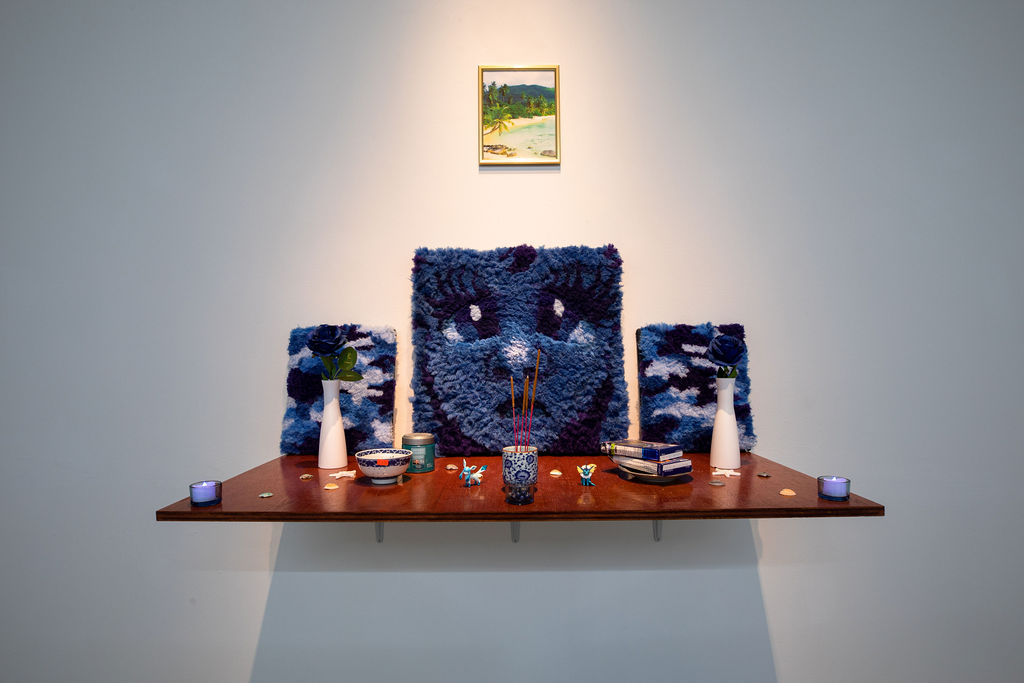
Cong-Tam Nguyen, Altar for a wandering blue soul, 2020
41 of 48
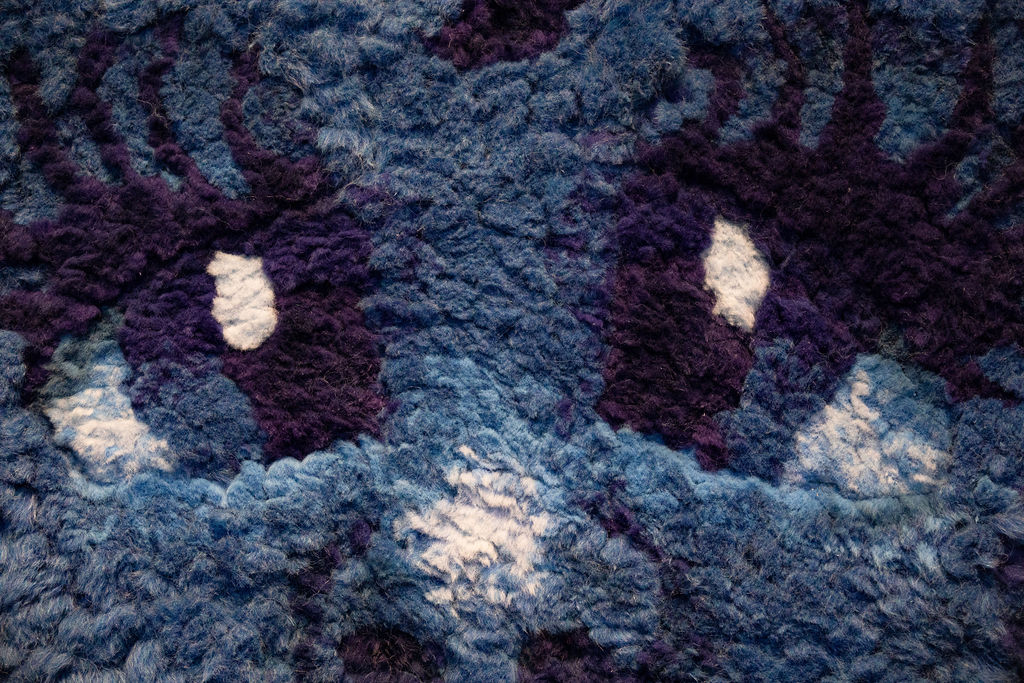
Cong-Tam Nguyen, Altar for a wandering blue soul, 2020 (detail)
42 of 48
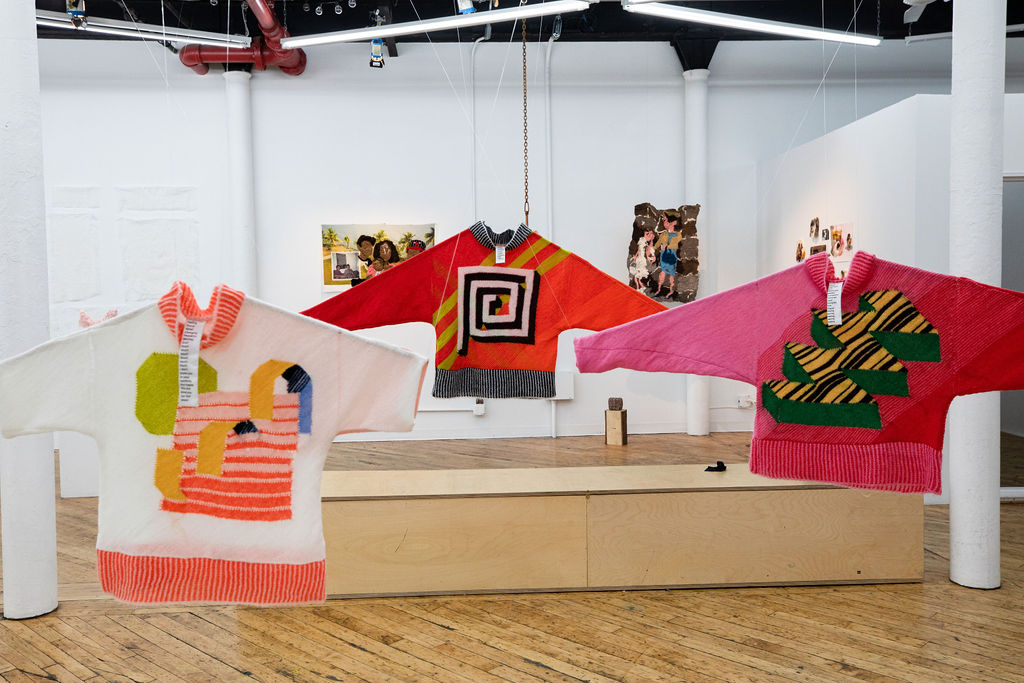
Marta Nowak // Despite how talkative I am, talking never feels right.
I wanted to live underwater, where your own voice can’t make any words, just noise. You can never say the wrong thing.
But I’ve always been a bad swimmer.
I always wished at 11:11 or when I would see a ladybug, I would anticipate the thrill of it’s luck.
The worst year of my life was the same year I shattered a full body mirror. The next year I saw a black cat crossing the street at night and that year was even worse.
I started to make my own good luck charms to hold onto. I have always been a tactile person, I need to have something to touch.
43 of 48
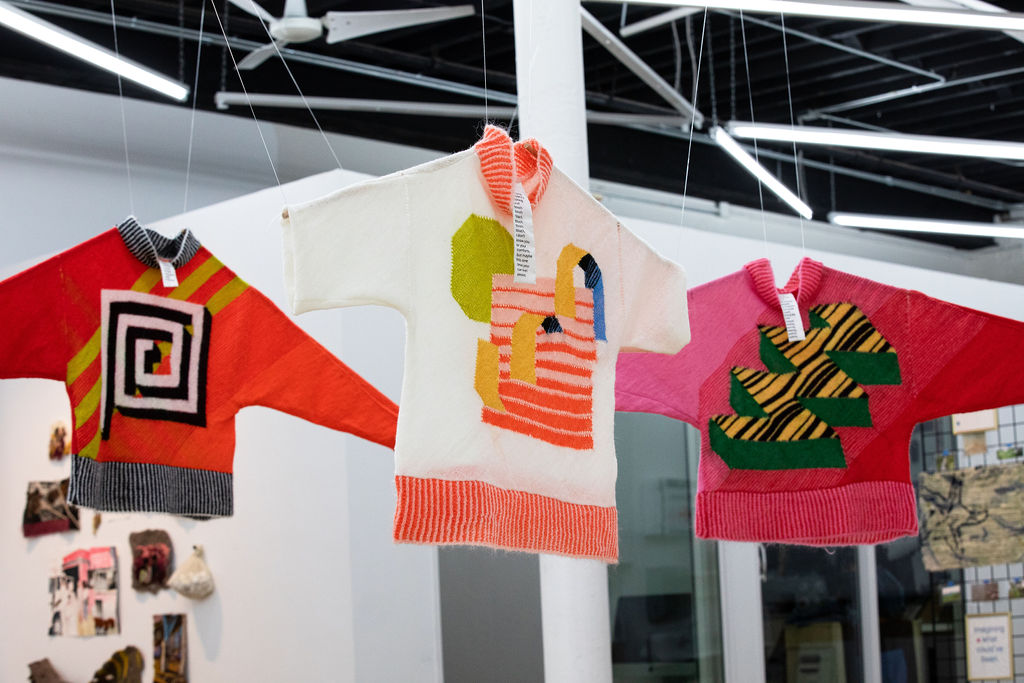
Marta Nowak // Making has always been a comfort. The sweaters I make are my own source of magic. If I can look at my work with ease, despite how draining it was to make, then somehow I know I can look backwards at all the faults, all the bad luck, with ease. As I map out the patterns and the colors, I want to be able to wear what I am feeling, but also just touch what I feel. But they are not meant for you to simply just wear, they are meant for you to have. Although one cannot measure mood, the colors and shapes in my work document my own. No color has a definitive meaning, what matters is how it engages with its counterpart colors, and the forms it fills.
44 of 48
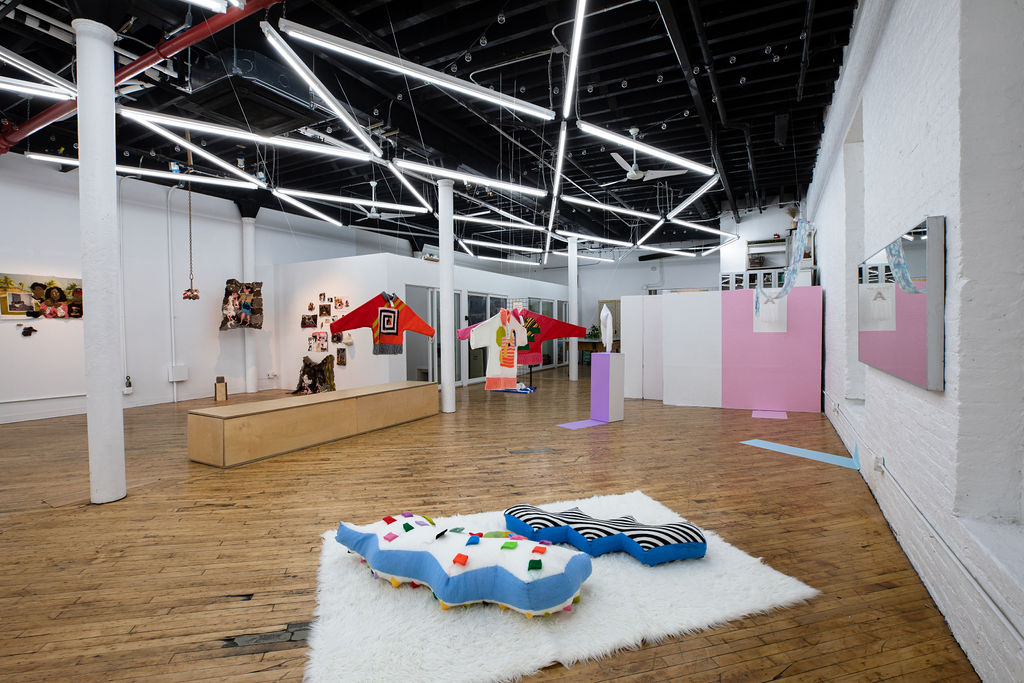
Marta Nowak // No, you cannot thoroughly record what I am feeling, not to the fullest extent. You can only understand bits. And where you see harmony, maybe that’s simply what I wanted to show you when I was feeling something else. Or maybe it is how I am able to manifest positivity from my negative thoughts. Either way, I can only hope that you can empathize.
That’s the best way I could describe it to you.
45 of 48
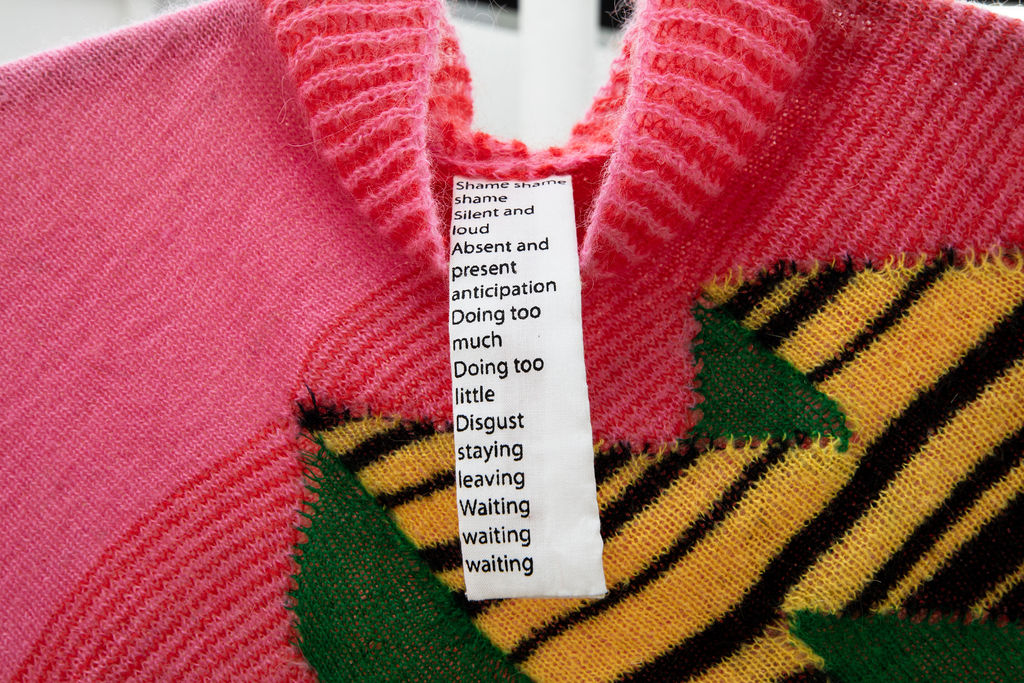
Marta Nowak, Doing too much, 2020 (detail)
46 of 48
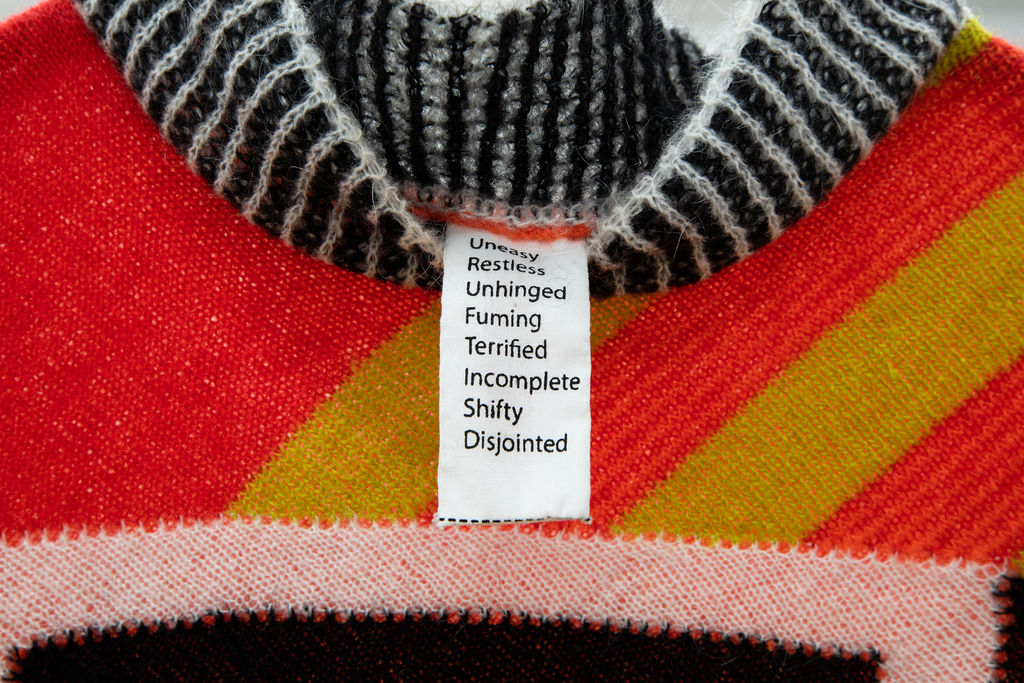
Marta Nowak, Fuming, 2020 (detail)
47 of 48
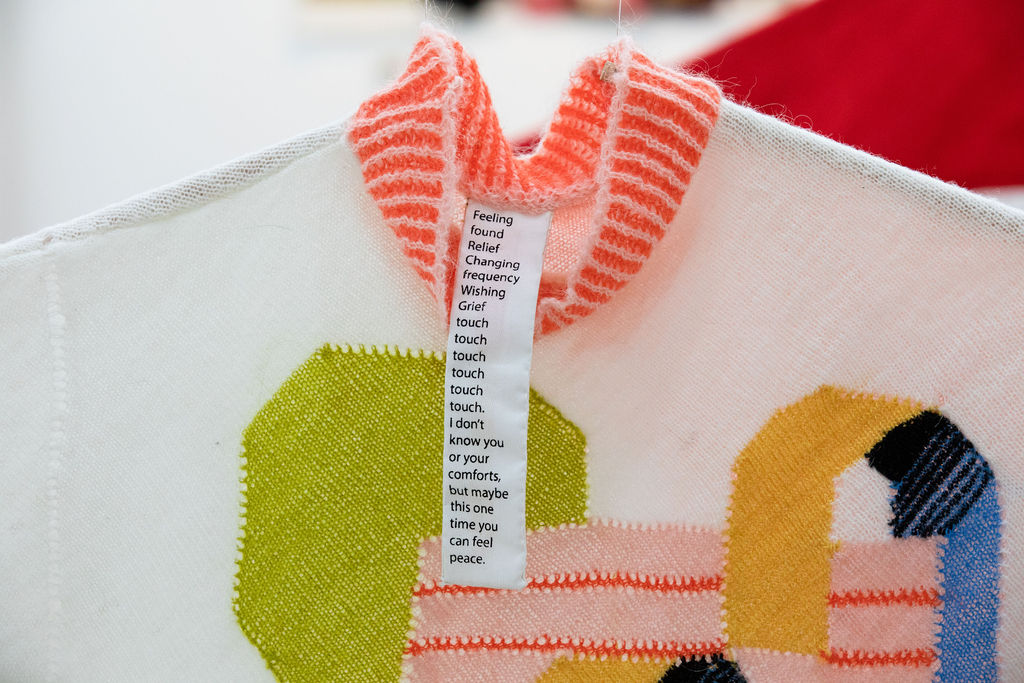
Marta Nowak, Feeling Found, 2020 (detail)
48 of 48